What Are Some Cool Facts About Animals
With an estimated 7.77 1000000 species of animals on the planet, the animal kingdom is an undeniably diverse place. Merely while the latitude of earthly biodiversity may be well known, the incredible things our animal counterparts can exercise are oftentimes hidden to humans. From furry creatures you lot never realized kissed to those who relish getting tipsy, these amazing beast facts are certain to wow even the biggest brute lovers out at that place.
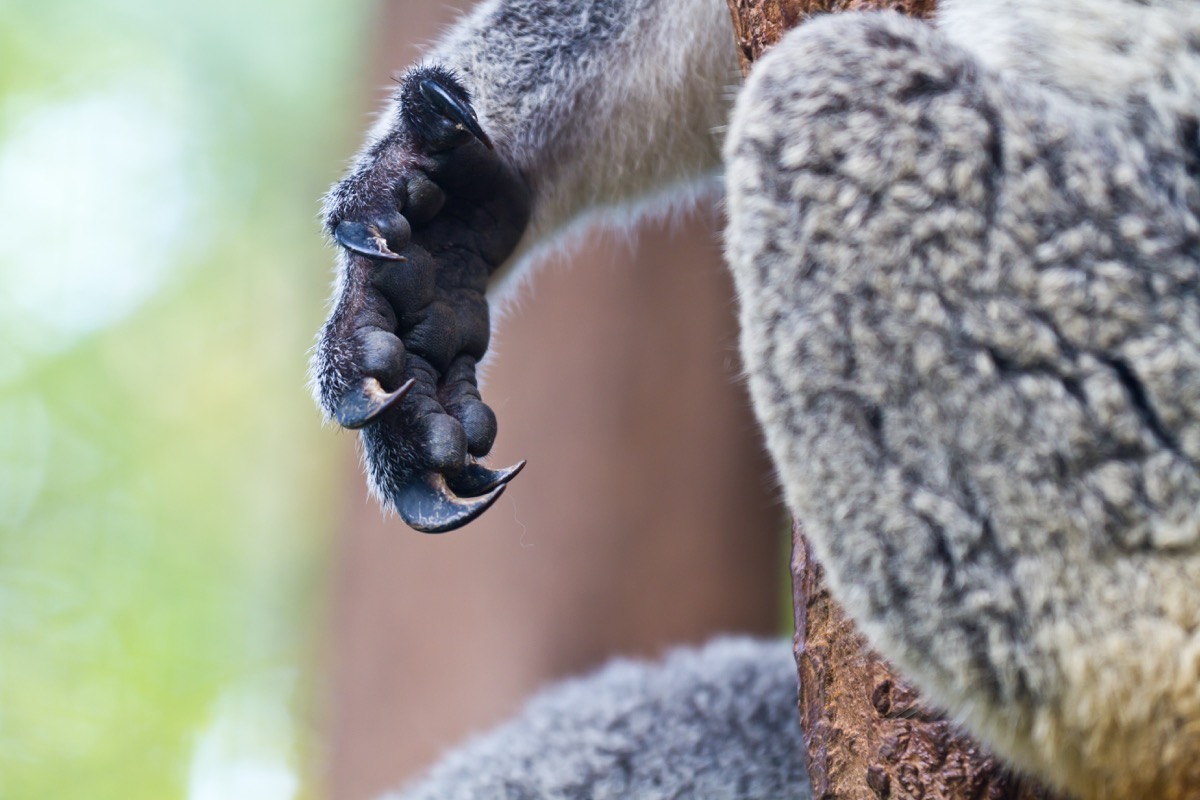
Koalas might not seem to have a lot in common with us, only if you were to take a closer look at their hands, you'd see that they take fingerprints that are but like humans'. In fact, they're so similar when information technology comes to the distinctive loops and arches, that in Australia, "police feared that criminal investigations may have been hampered by koala prints," co-ordinate to Ripley's Believe It or Not. Any koalas who want to commit crimes would exist wise to do and so wearing gloves.

Parrots may be associated with pirates, but it turns out African grey parrots are nothing like the infamously greedy, treasure-seeking criminals. Instead, researchers take discovered that the colorful birds will "voluntarily help each other obtain food rewards" and perform "selfless" acts, according to a 2020 study published in Electric current Biology. Report co-author Auguste von Bayern noted, "African grey parrots were intrinsically motivated to assist others, even if the other individual was not their friend, so they behaved very 'prosocially.'"
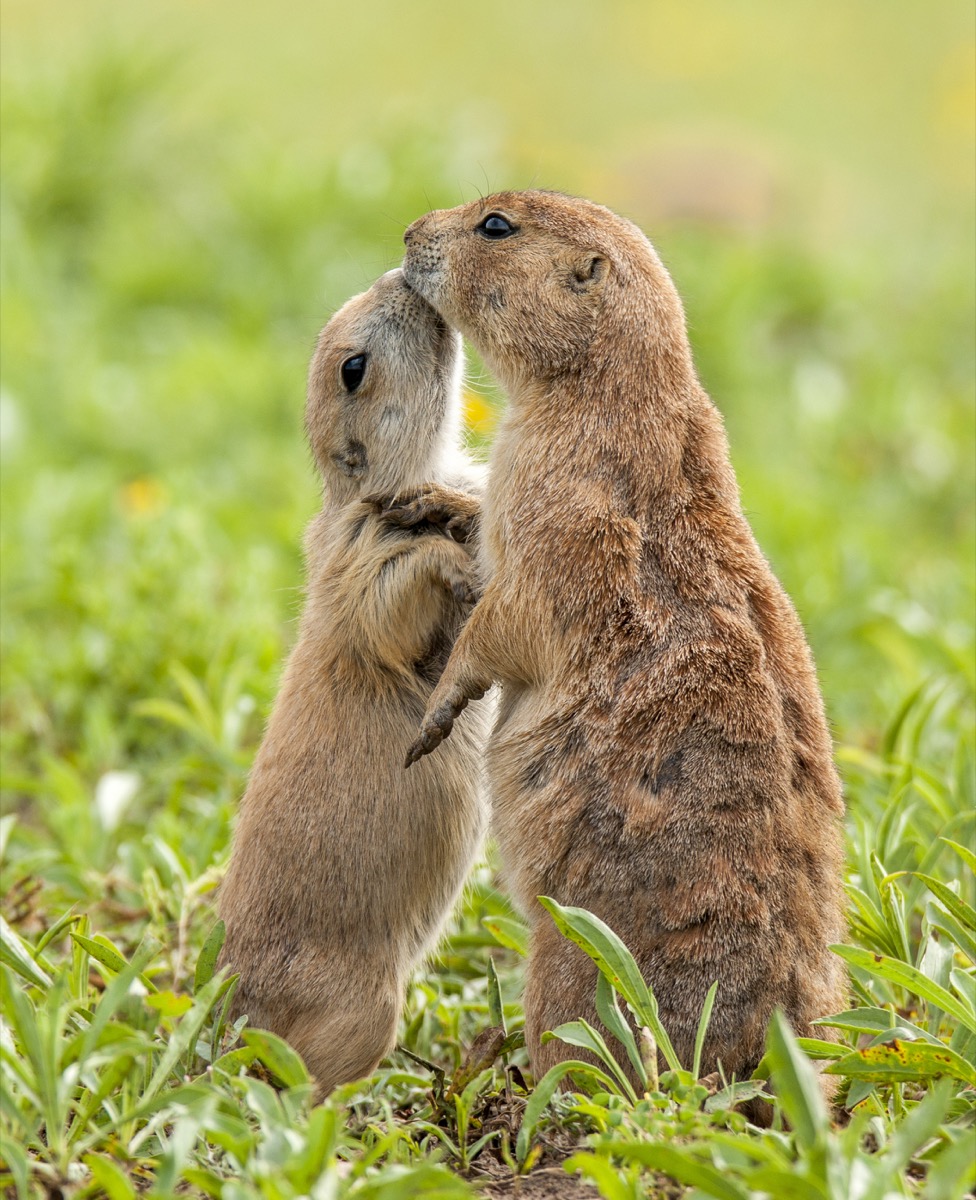
Prairie dogs are quirky creatures for a number of reasons: They're giant rodents, they dig massive interconnected clandestine homes, and they kiss. While they're actually touching their front end teeth in club to identify each other when they seem to be sweetly sharing a smooch, the BBC explains that scientists believe prairie dogs "'buss and cuddle' more when they are being watched by zoo visitors," because they "appeared to enjoy the attention."

Venereal may be able to intimidate other creatures with their claws, but if that's not enough, ghost crabs will growl at their enemies like a dog. However, unlike our canine friends, crabs brand these fearsome noises using teeth located in their stomachs. "There are three principal teeth—a medial tooth and 2 lateral teeth—that are substantially elongated, hard (calcified) structures. They are role of the gastric mill apparatus in the tum, where they rub against each other to grind up food," Jennifer Taylor, from the Academy of California, San Diego, told Newsweek. She and her colleagues were able to nail down the source of the noise after noticing that "the crabs [were] 'growling' at" them.
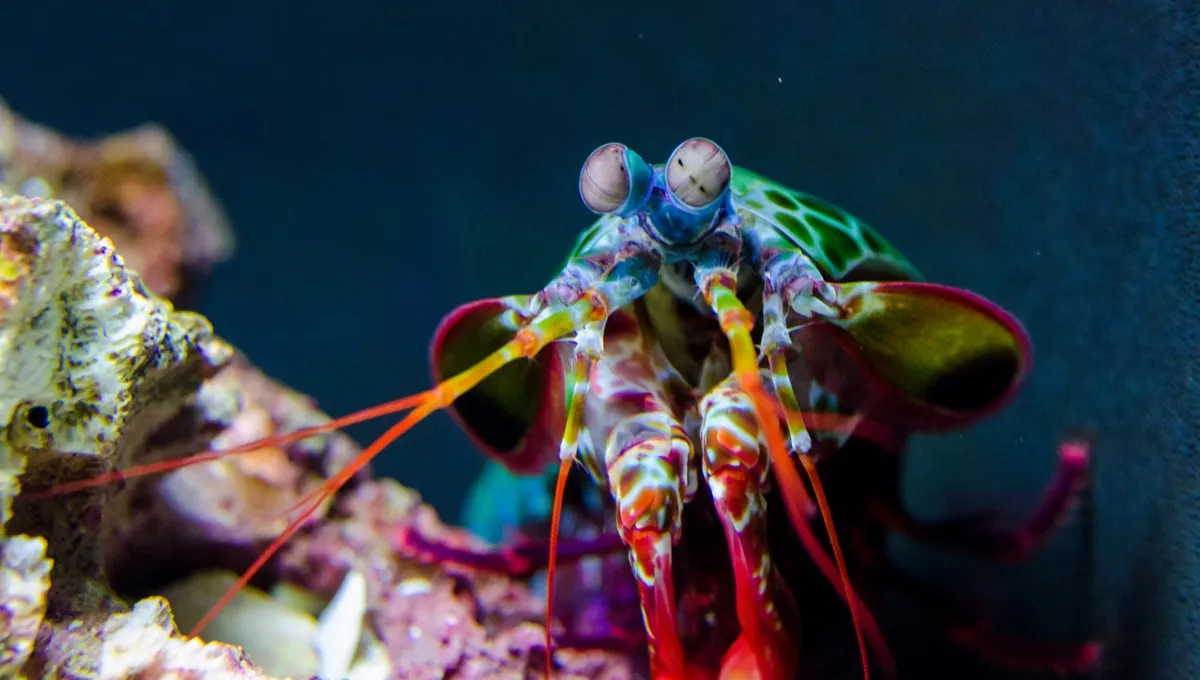
You might call up that boxers have the most impressive jabs, hooks, and uppercuts on the planet, only it's the mantis shrimp that boasts the world's fastest punch. Traveling at about fifty mph, when a shrimp punches, its little fist of fury (which, of course, isn't a fist at all) is "accelerating faster than a .22-caliber bullet," according to Science. National Geographic shared the tale of one such small smasher, explaining that "in April 1998, an ambitious creature named Tyson smashed through the quarter-inch-thick glass wall of his prison cell. He was shortly subdued by nervous attendants and moved to a more secure facility in Great Yarmouth. Different his heavyweight namesake [former professional boxer Mike Tyson], Tyson was merely 4 inches long. But scientists take recently found that Tyson, similar all his kin, can throw one of the fastest and most powerful punches in nature."
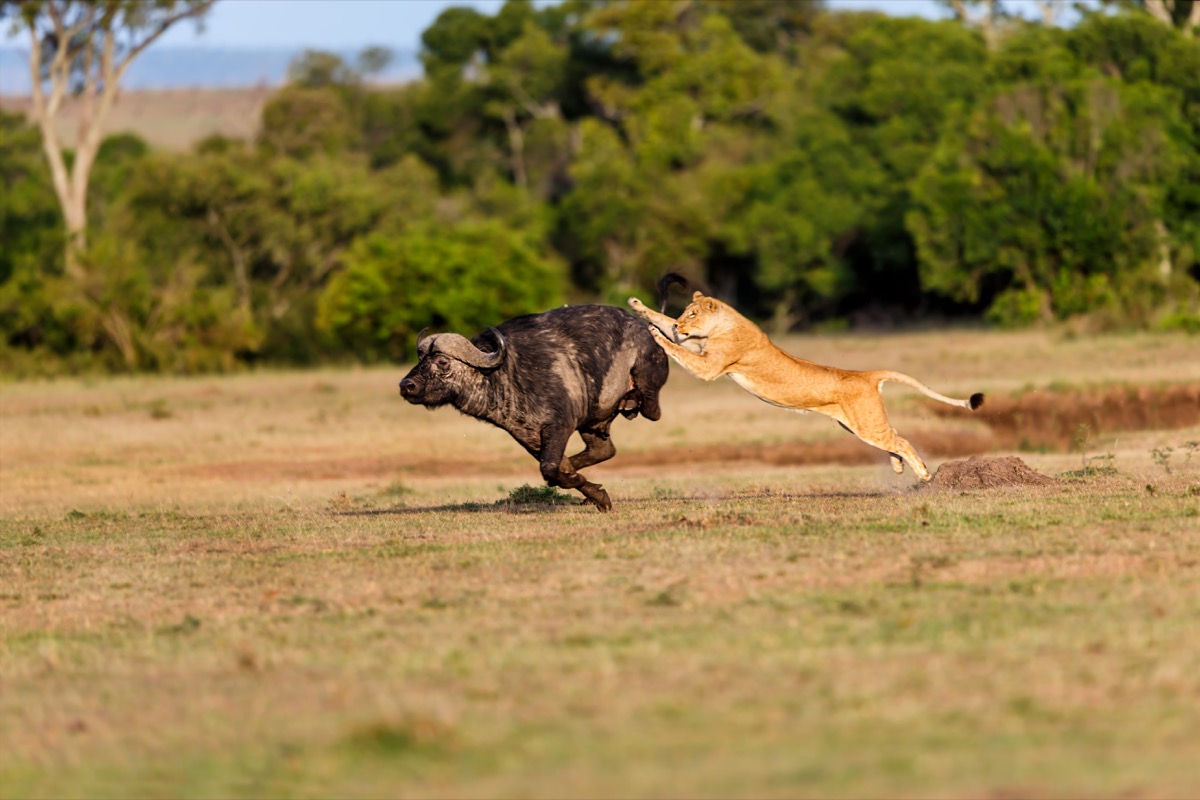
While male lions attract their off-white share of attending thanks to their impressive manes, it's the female lions who do the bulk of the work when it comes to feeding their families. "Lionesses, not male lions, practise the majority of hunting for their pride," according to CBS News. "Lionesses hunt around xc pct of the time, while the males protect their pride."

Narwhals are unlike about other whales considering they accept what appears to exist a giant tusk. Simply that'southward not actually a tusk at all—what y'all're seeing is a molar. Harvard Academy's Martin Nweeia told the BBC that the "tooth is well-nigh like a slice of skin in the sense that it has all these sensory nerve endings," adding that it'south "substantially built inside out."

Dogs are well known for beingness man'southward best friend, and information technology turns out that's a relationship that goes back longer than you might expect. Co-ordinate to Guinness World Records, the oldest known brood of domesticated domestic dog goes all the way back to 329 BC. "Saluki dogs were revered in ancient Egypt, beingness kept as majestic pets and being mummified after expiry," they note. "In that location are carvings constitute in Sumer (present-day southern Iraq) which represent a dog, closely resembling a saluki, which engagement back to 7000 BC."

Cats accept also been hanging around humans for thousands of years. Guinness World Records reports that we've been domesticating cats for ix,500 years. Proof of this came in 2004 when the "bones of a true cat were discovered in the neolithic hamlet of Shillourokambos on Republic of cyprus. The position of the cat in the basis was side by side to the bones of a human, whose similar land of preservation strongly suggests they were buried together."

Puffins surely have enough to exist proud of with their beautiful beaks, but the seabirds as well happen to be quite clever. According to a 2019 study published in Proceedings of the National Academy of Sciences (PNAS), Atlantic puffins in both Wales and Iceland were observed "spontaneously using a small wooden stick to scratch their bodies." Indeed, in a video shared by Science, a little puffin tin be seen picking up a tiny twig earlier using information technology to scratch an itchy spot on its belly.

"Most humans (say 70 percent to 95 percent) are right-handed, a minority (say 5 percent to 30 percent) are left-handed," according to Scientific American. And the same holds true for bottlenose dolphins. In fact, the savvy swimmers are even more right-handed than we are. A team led past Florida's Dolphin Communication Project took a look at the feeding behavior of bottlenose dolphins and constitute that the animals were turning to their left side 99.44 per centum of the fourth dimension, which "actually suggests a correct-side bias," co-ordinate to IFL Scientific discipline. "It places the dolphin'due south right side and correct eye shut to the ocean floor as it hunts."

If you're ever in the area of "the Broadway medians at 63rd and 76th streets" in New York City, keep an eye on the ground for itch critters and yous might spot something rare. That'due south where the "ManhattAnt" tin be found, an ant that merely lives in the ane pocket-sized area of the metropolis. "Information technology'south a relative of the cornfield emmet, and it looks like information technology's from Europe, but we tin't lucifer information technology upwardly with whatever of the European species," Rob Dunn, a biology professor at North Carolina State University, told the New York Post. Dunn and his team discovered the isolated ant variety in 2012.
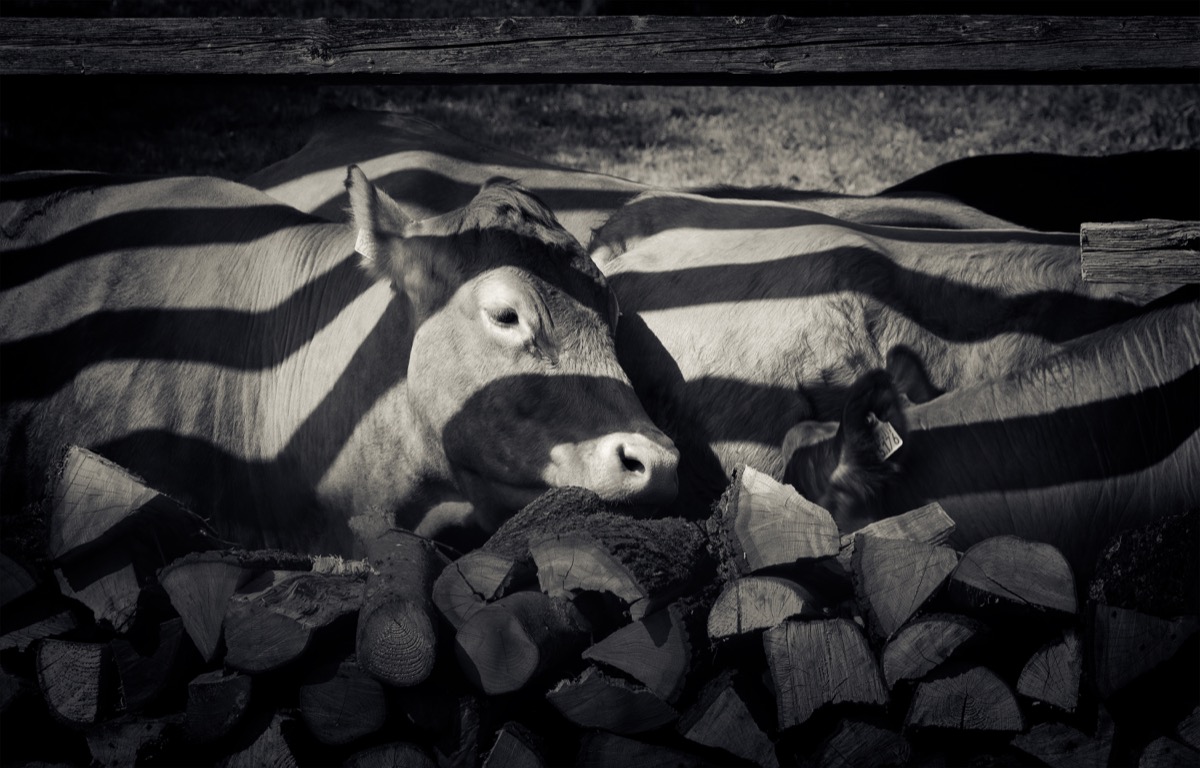
Cows take to bargain with pesky flies that are beyond annoying for the docile creatures. Luckily, farmers can now protect their animals by painting them with zebra-like stripes. According to a 2019 written report published in PLOS One, "the numbers of bitter flies on Japanese Blackness cows painted with black-and-white stripes were significantly lower than those on non-painted cows and cows painted but with blackness stripes." IFL Science suggests this might work because "the stripes may cause a kind of motion camouflage targeted at the insects' vision, disruptive them much in the manner that optical illusions … confuse u.s.."
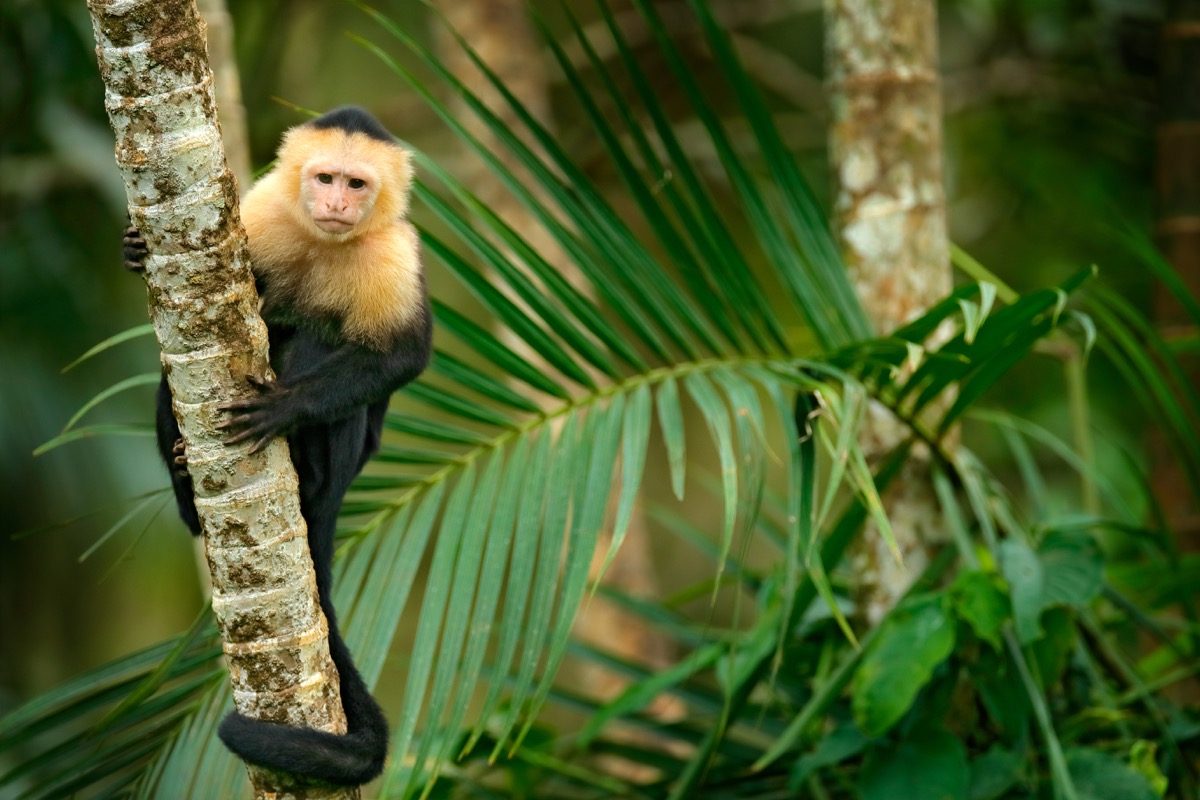
Monkeys are undeniably beautiful. They tin can also be pretty darn gross. Capuchin monkeys, for example, urinate on their easily and feet when they're feeling "randy." "We think the blastoff males might use urine-washing to convey warm, fuzzy feelings to females, that their solicitation is working and that there'south no need to run away," primatologist Kimran Miller told NBC News. "Or they could be doing information technology because they're excited." Either manner, ew!
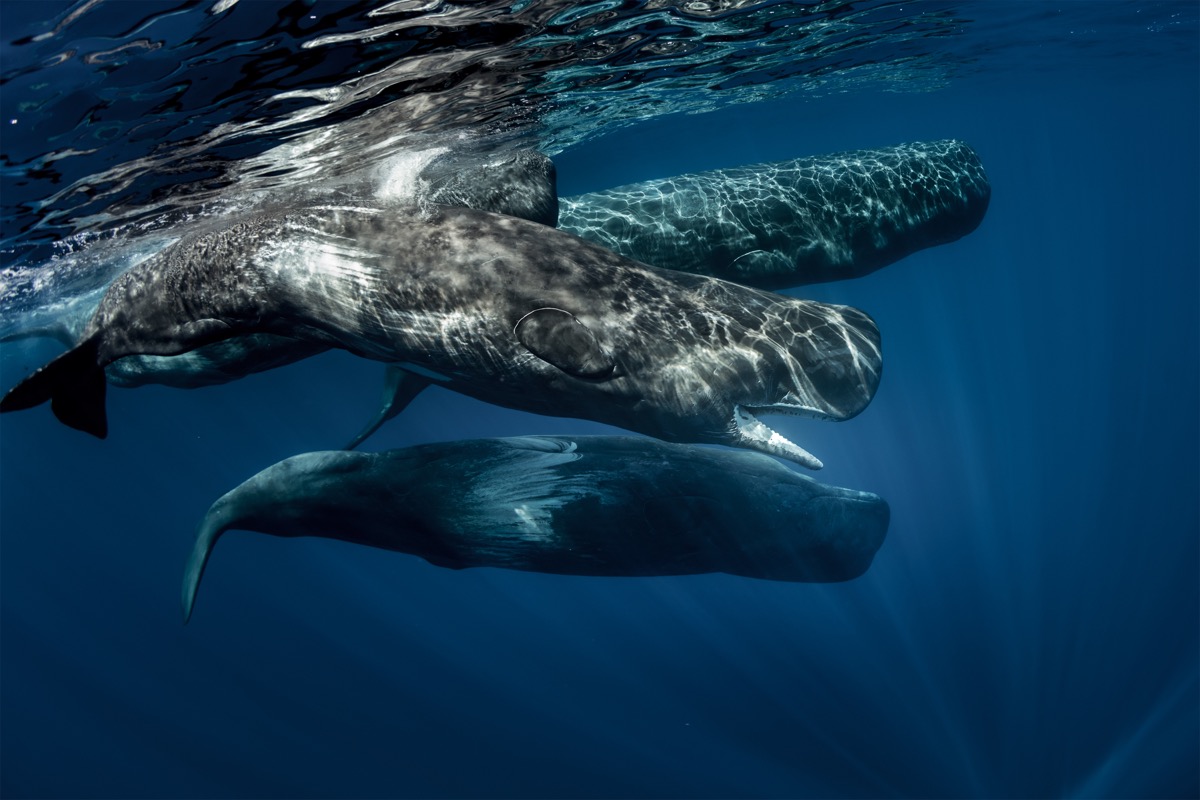
People who come from different areas around the world tend to speak with inflections, fluctuations, and patterns that are specific to their home regions. Obviously, the same can be said for whales. Researchers from Dalhousie Academy in Canada and the University of St. Andrews in the Uk have establish evidence that seems to show whales in the Caribbean take a different "accent" than whales in other oceans.
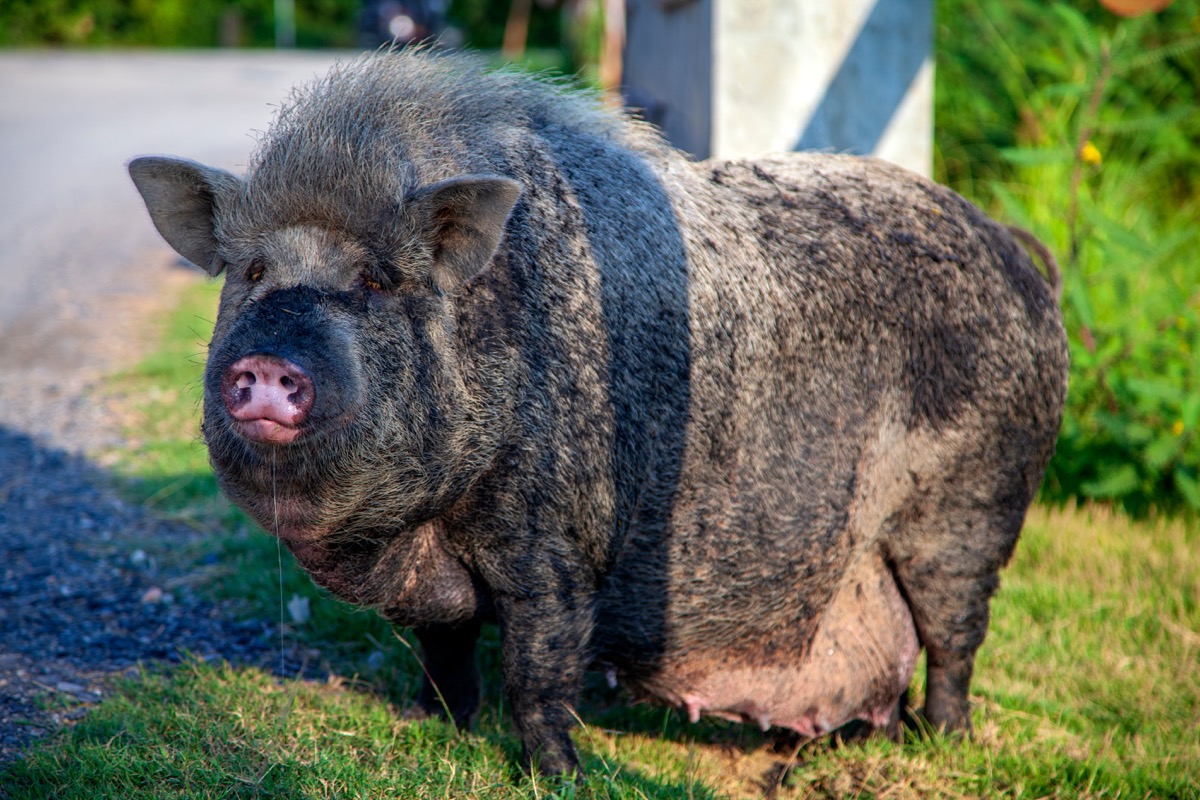
In Nanning, the capital of China'south Guangxi province, a man named Pang Cong has a rather remarkable animal living on his farm: a one,102-pound pig. That's roughly the same size equally a full-grown developed male polar bear. According to Bloomberg, massive swine of that size "tin sell for more than ten,000 yuan ($i,399), over three times higher than the average monthly disposable income" in the area.
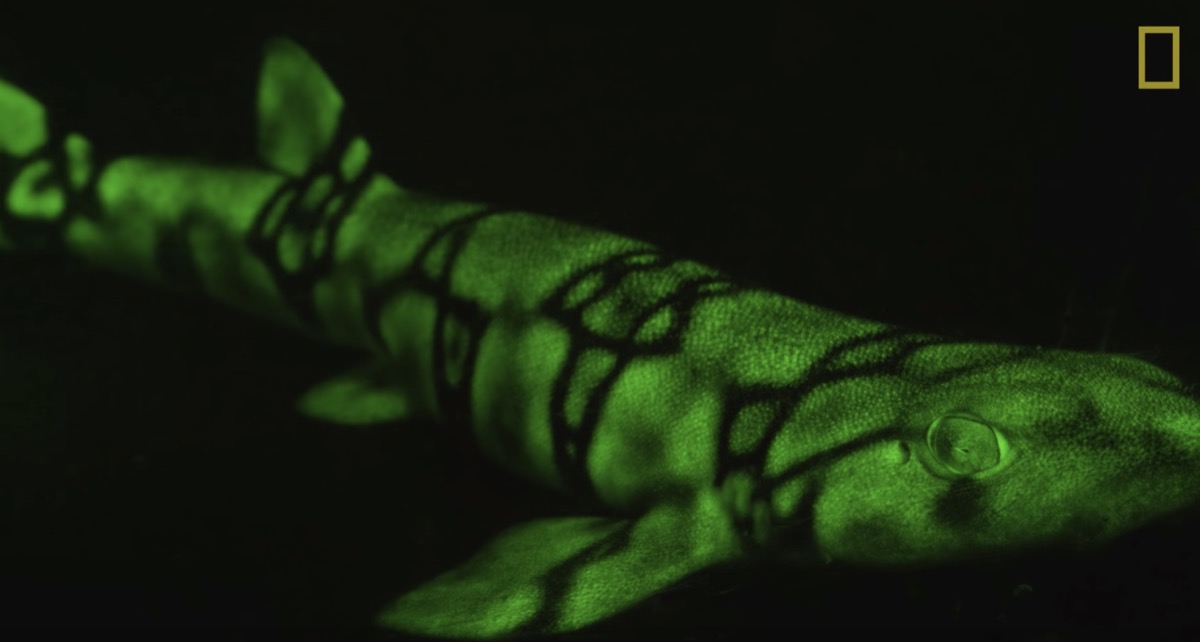
Sharks avowal some enviable—and terrifying—features, similar their sleek blueprint and razor-sharp teeth. And while glow-in-the-night sharks sound like something you'd see in a sci-fi film, they're totally existent, equally noted in a 2019 study published in iScience. Researchers were already enlightened that some shark species produce a glow that merely other sharks can see, but now scientists have discovered that "previously unknown small-scale-molecule metabolites are the cause of the green glow," according to CNN. This glow "helps sharks identify each other and even fight confronting infection on a microbial level."
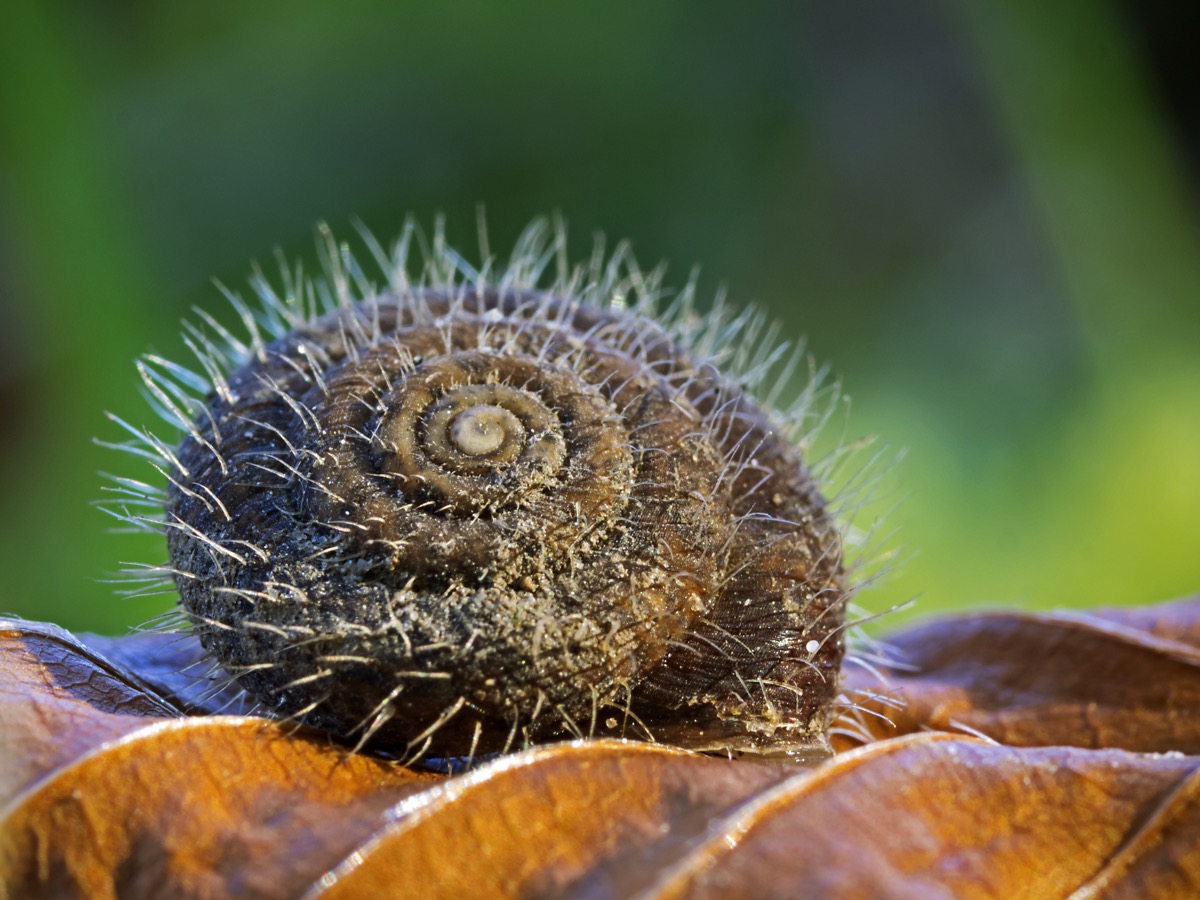
While it's not a secret that snails have shells, you probably didn't know that some really have hairy shells. These hairs are rather handy to accept, as they aid a snail stick to wet surfaces like leaves.
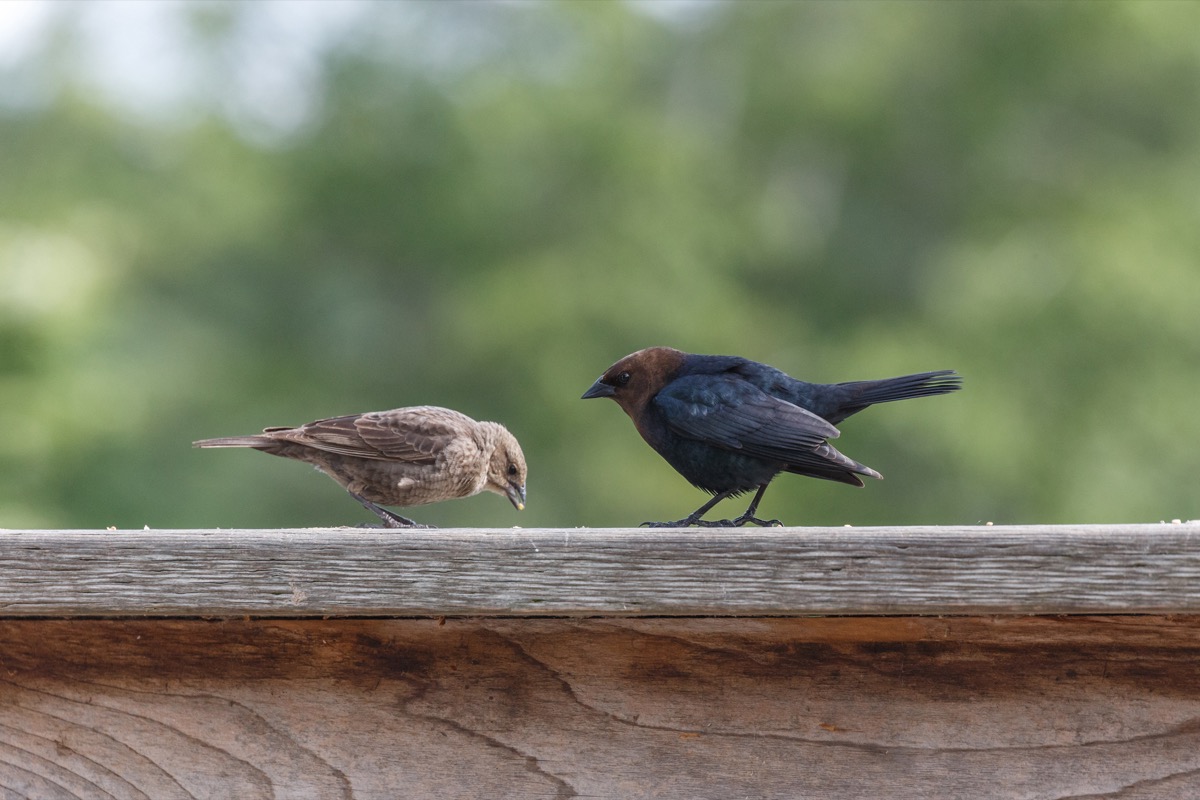
Cowbirds lay their eggs in other bird species' nests, which means that the picayune ones eventually need to reconnect with their own kind when the time is right. And when that time comes, the young birds have a play a joke on for figuring out who to reach out to. "Juvenile cowbirds readily recognize and affiliate with other cowbirds. That's considering they have a secret handshake or countersign," co-ordinate to Scientific discipline Daily. To put it more simply, they utilise "a specific chatter call" to beckon each other.
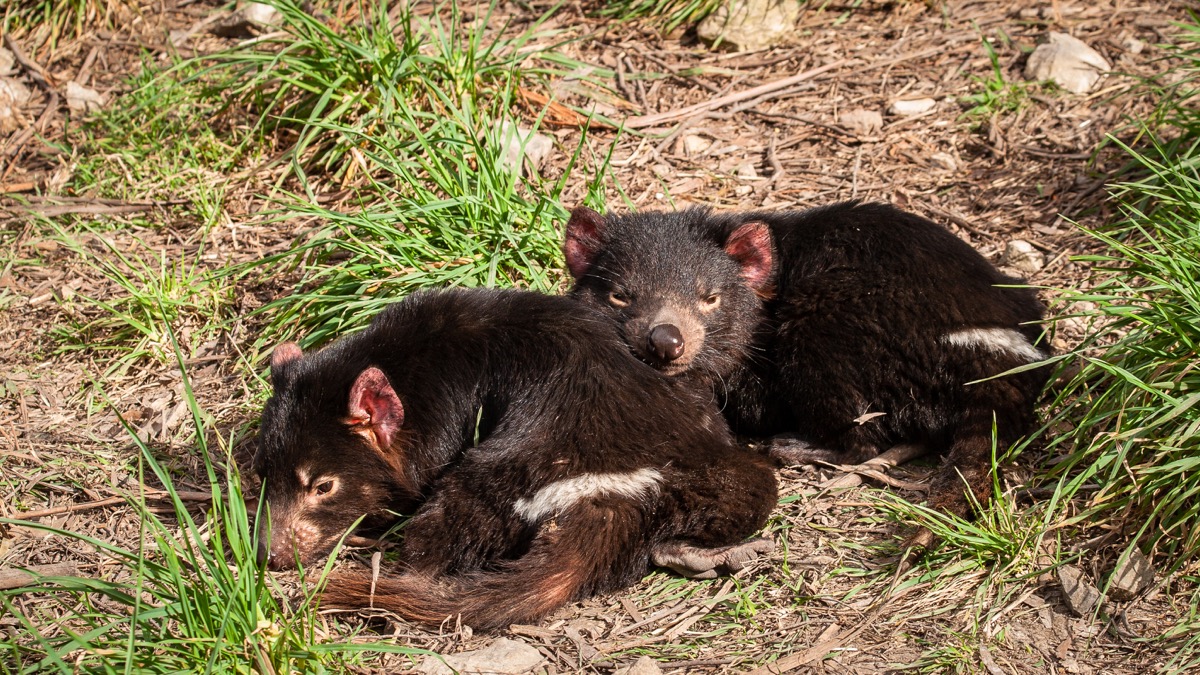
If you have all-time friends who take been around since y'all were a child, then you take something in common with Tasmanian devils. Research has shown that Tasmanian devils class bonds when they're immature that last for the rest of their lives. Equally Zoos Victoria's Marissa Parrott told IFL Science, "In the wild, when babe devils leave their mums, nosotros believe they all socialize together." As the website notes, "young devils have their ain dens," "engage in friendly slumber-overs," and when given the hazard, they adopt "to share with their … original friends."

Those who find themselves in the presence of a grizzly carry volition surely want to stay out of attain of this brute'due south super precipitous claws. But they'll certainly also desire to keep out of the grizzly's mouth, considering these creatures "have a bite-force of over viii,000,000 pascals," according to National Geographic. That ways grizzly bears can literally crush a bowling brawl between their jaws. Yikes!
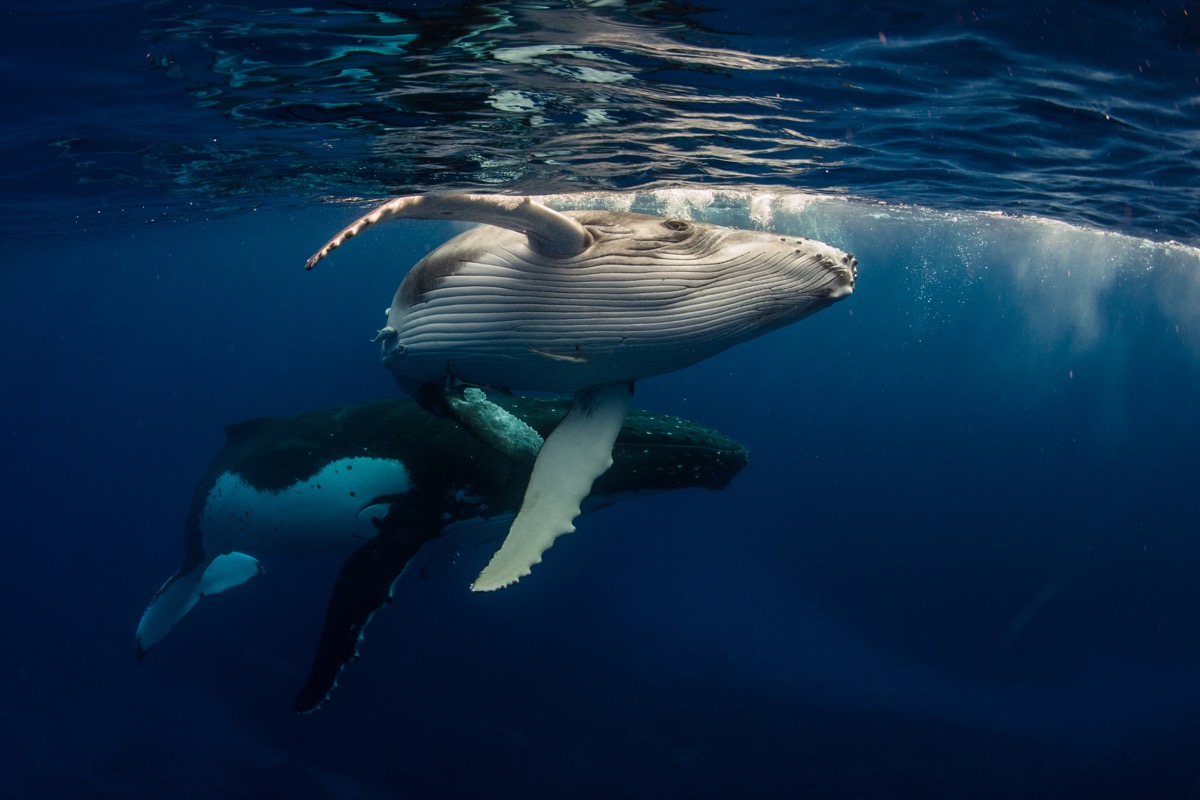
You lot might think that a whale's massive size is the merely edge they'd demand when it comes to hunting in the open waters. Simply humpback whales actually team upward to utilise a "bubble-net" technique in club to catch their prey. "Sometimes, the whales will swim in an up spiral and blow bubbles underwater, creating a circular 'net' of bubbling that makes it harder for fish to escape," Science News reports.
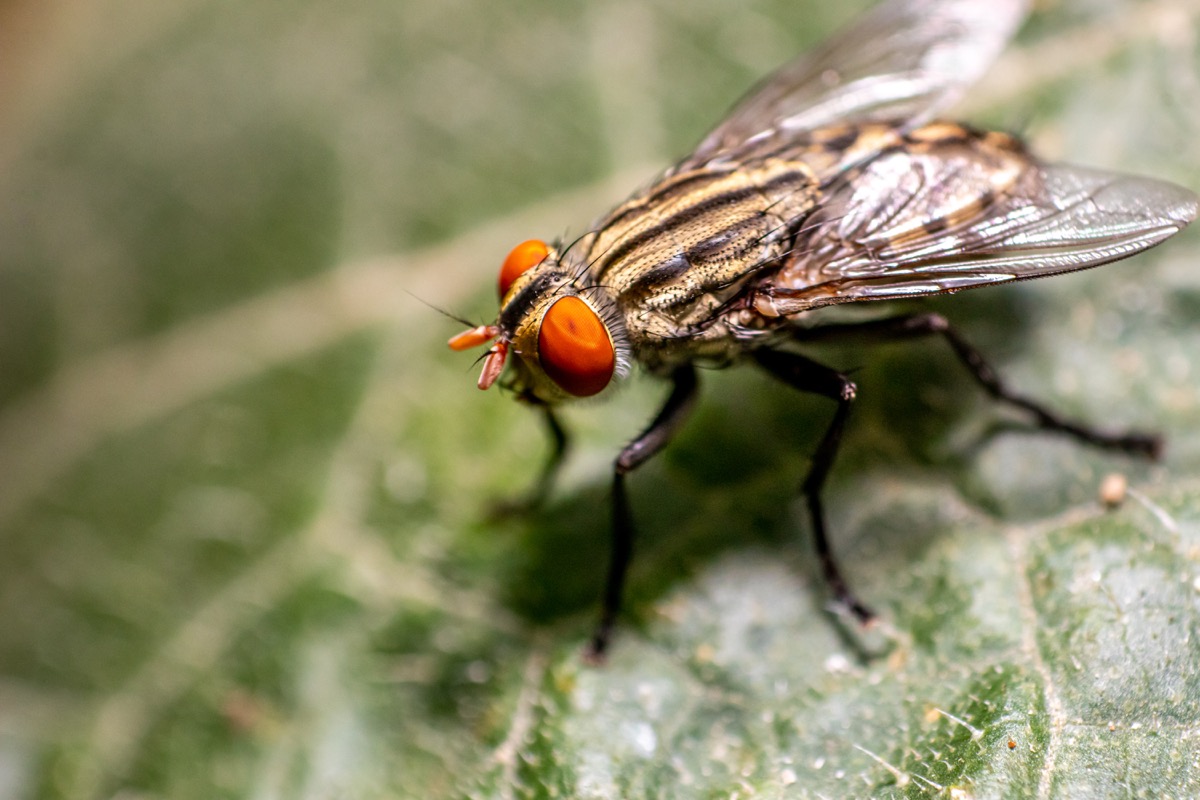
When you hear a housefly buzzing effectually your home, you lot might be annoyed past the persistent sound. However, the next fourth dimension it happens, try to soothe yourself by noting that the airborne pest is actually buzzing in an F fundamental. How melodious!
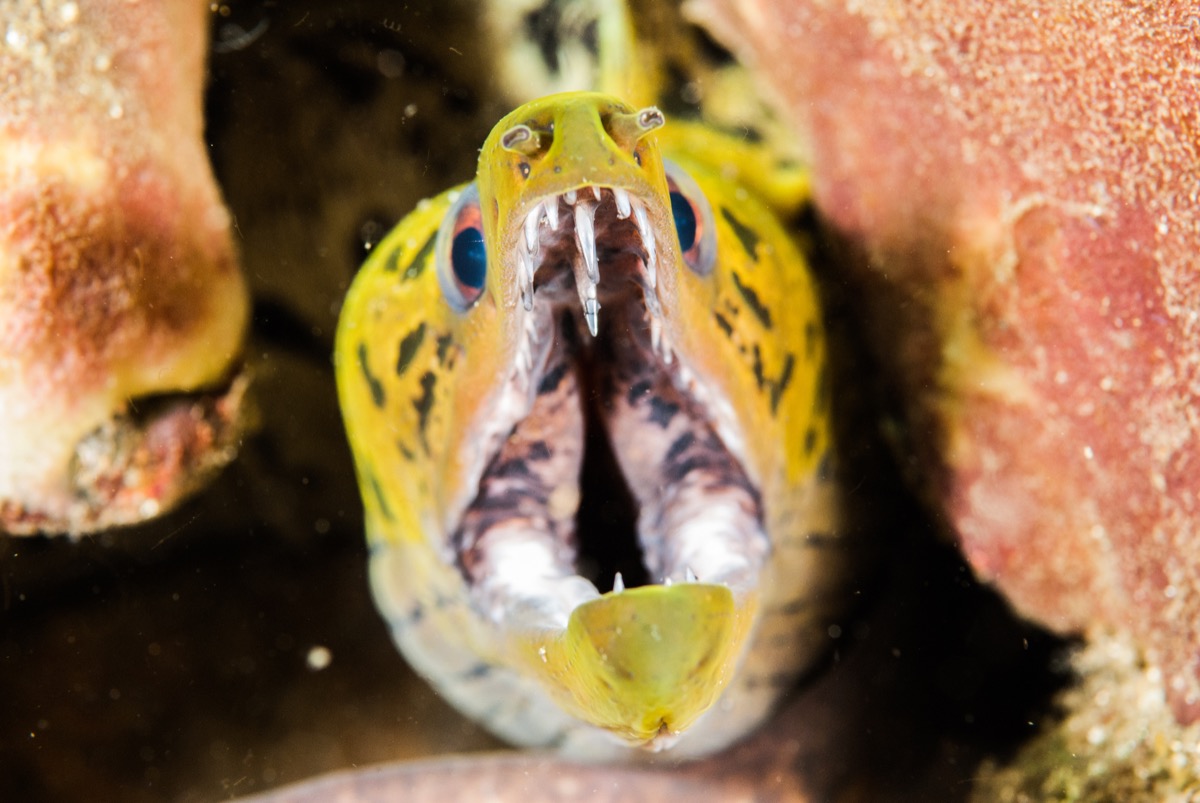
If you already thought that eels were kind of creepy, then this fact isn't going to make y'all feel whatever amend most them. Moray eels accept what's chosen pharyngeal jaws, which are a second pair of "Conflicting-manner" jaws that are located in the throat and emerge to grasp prey before pulling the unfortunate meal downward into the eel's gullet.

Over in New Zealand, surfers take noticed the same thing that those who ride the waves in California have witnessed: ducks can surf. The birds do and so in order to catch food or simply to move through the water chop-chop. Sports reporter Francis Malley spotted a female person duck and her babies catching a wave and told the New Zealand Herald, "The mother was surfing on her abdomen on the whitewash. I've never surfed with ducks before then this was a first."
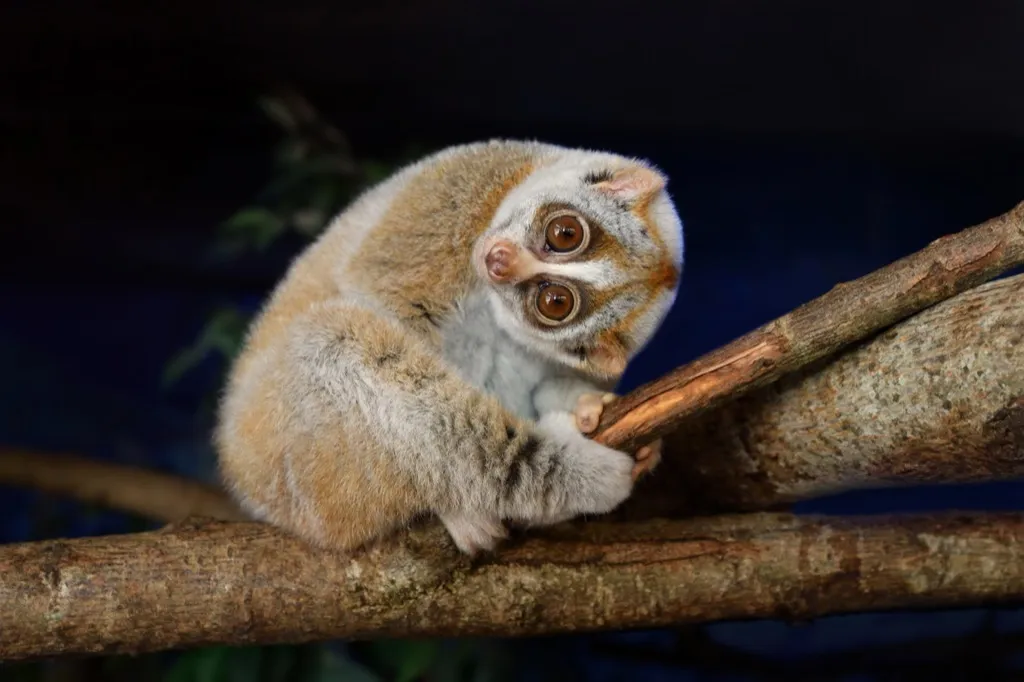
They may be cute, only their bite can kill. According to Popular Scientific discipline, these adorable animals secrete toxins from a gland in the crook of their inner arms. Their bites have acquired anaphylactic shock and even decease in humans. Better watch out!
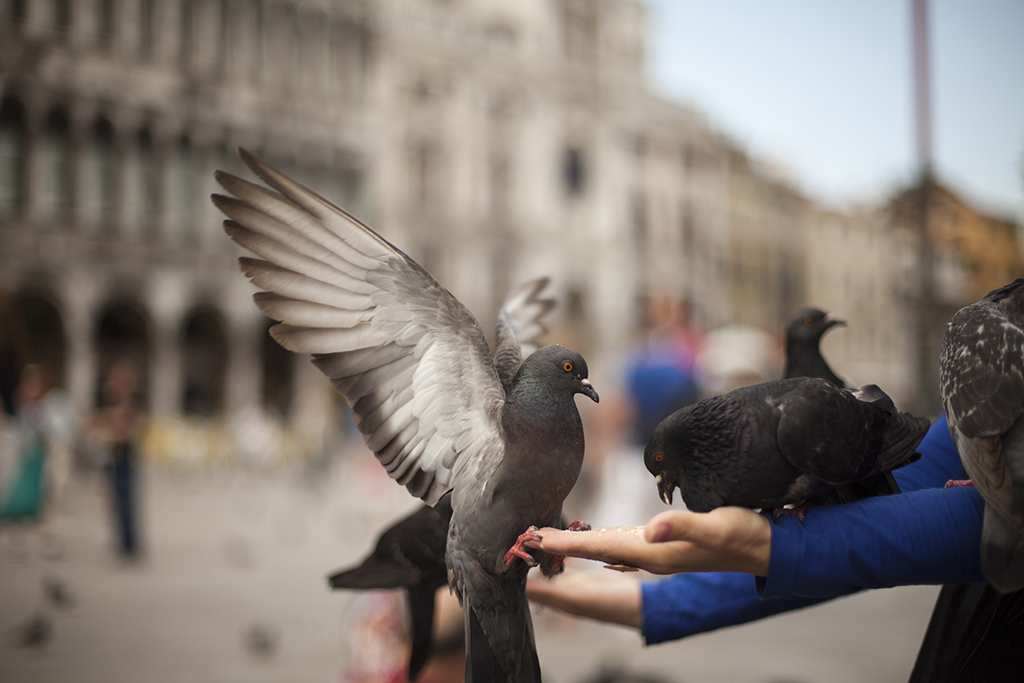
You might think of pigeons equally… not that smart. But it turns out, they're actually quite intelligent. In fact, ane 2011 study published in the journal Science plant that the birds are capable of doing math at the aforementioned level as monkeys. During the study, the pigeons were asked to compare 9 images, each containing a dissimilar number of objects. The researchers found that the birds were able to rank the images in guild of how many objects they contained. Put simply, they learned that the birds could count!
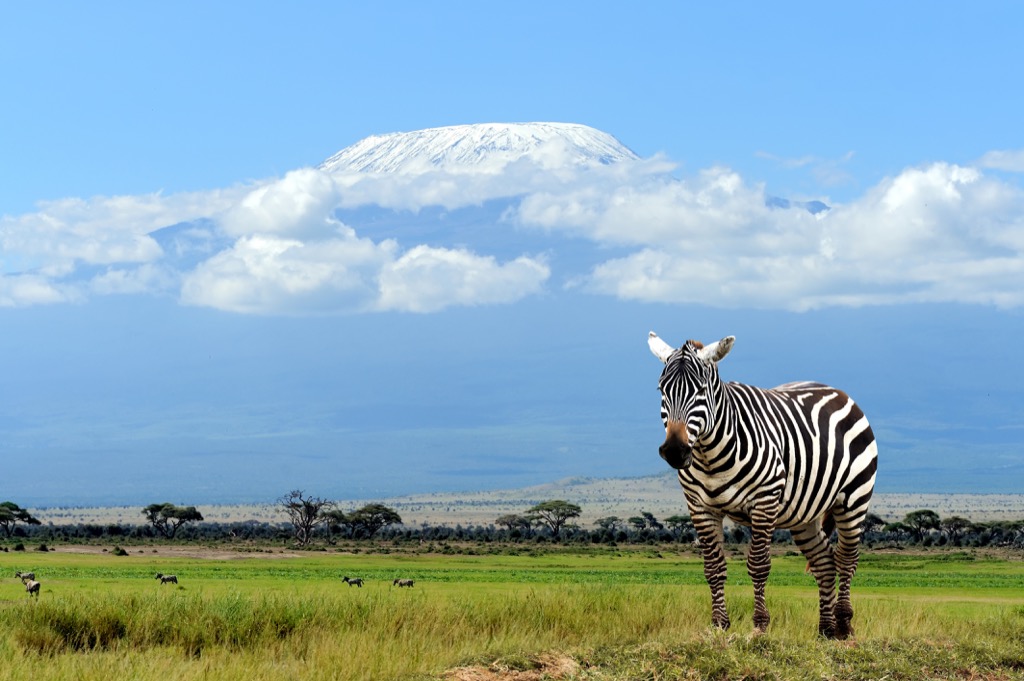
Cows may benefit from bogus stripes, but zebras have the real deal. One 2012 report published in the Periodical of Experimental Biology suggests that zebras' black and white stripes may be an evolutionary feature to fend off harmful horsefly bites. "A zebra-striped horse model attracts far fewer horseflies than either homogeneous black, brown, grey or white equivalents," the researchers wrote.
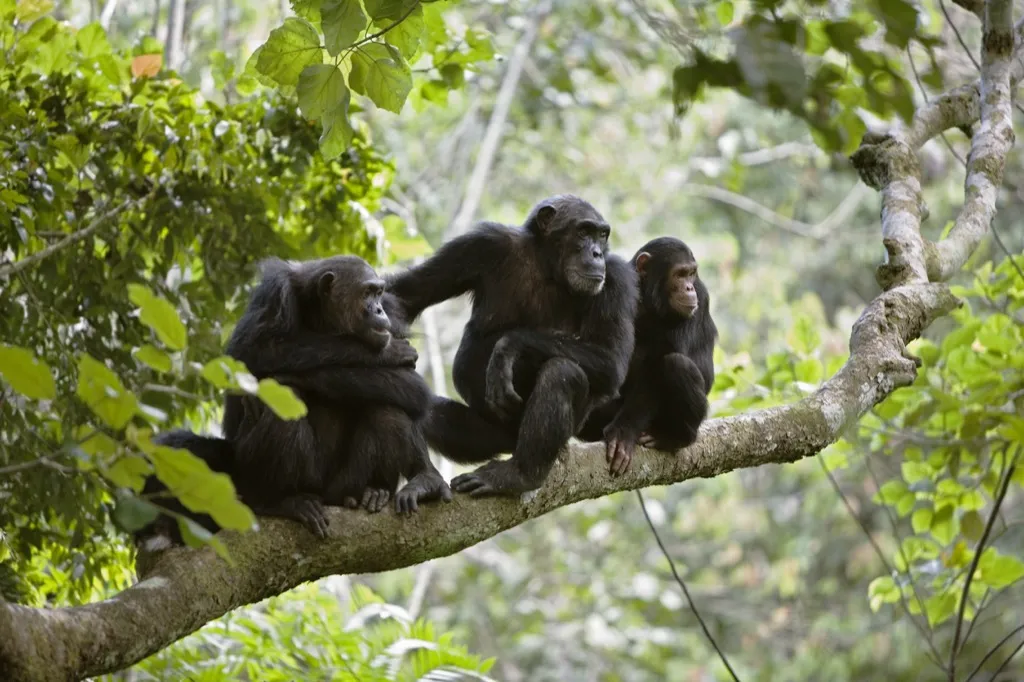
Humans aren't the simply animals who savour a beverage or two. A 2015 study published in the journal Royal Gild Open Science reveals that chimpanzees in Guinea had a fondness for imbibing fermented palm sap and getting tipsy in the procedure.
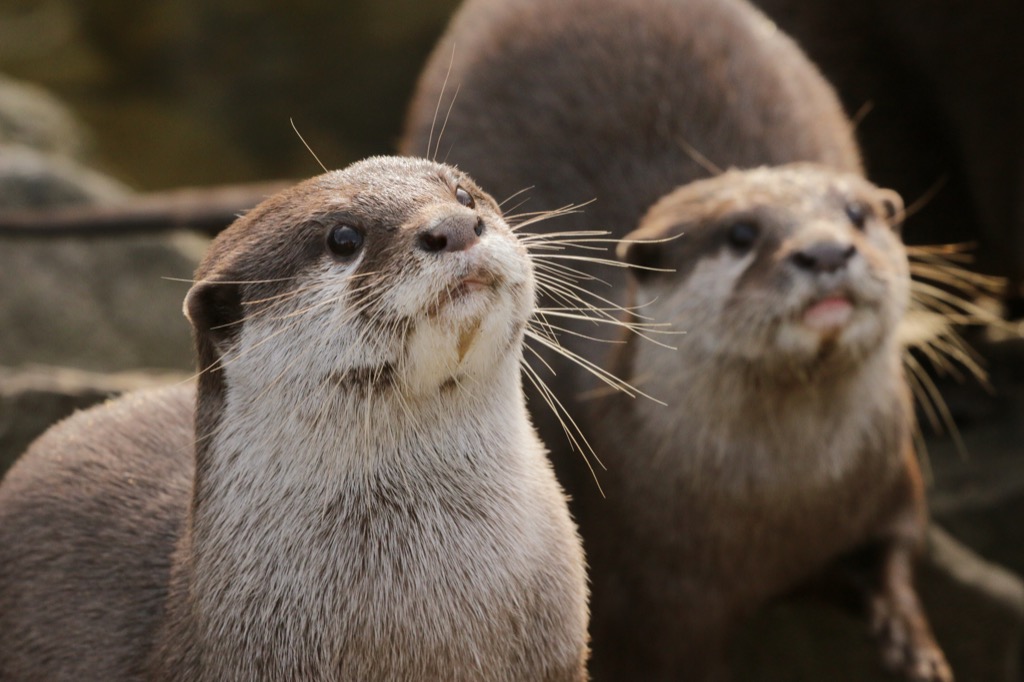
While many scientists believe that tool use among dolphins is a relatively new phenomenon, a 2017 study published in Biology Messages suggests that otters may have been using tools for millions of years. Sea otters frequently use rocks to interruption open up well-armored prey, such as snails.
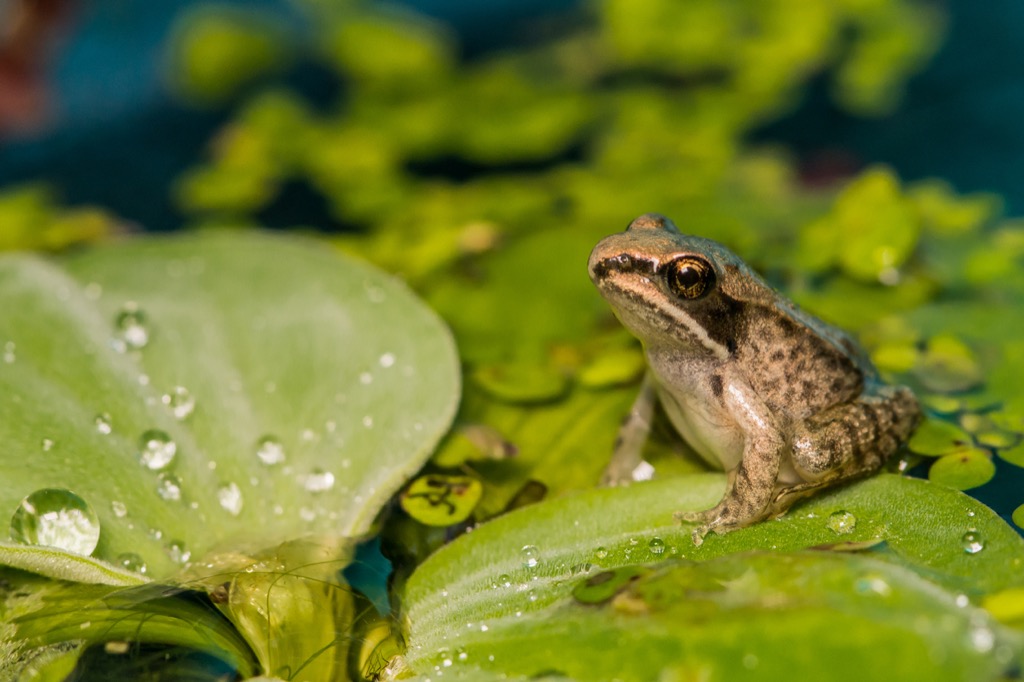
Why tolerate the cold when you lot could just freeze yourself solid? According to Kenneth Storey, a professor at Carleton University in Ottawa, frogs undergo repeated freeze-thaw cycles. "We take imitation springs here all the time where it gets really warm and all the snow melts and then suddenly—bam—the wind comes from the n and it'south dorsum down to minus 10, minus xv [Celsius], and they're fine," Storey told National Geographic.
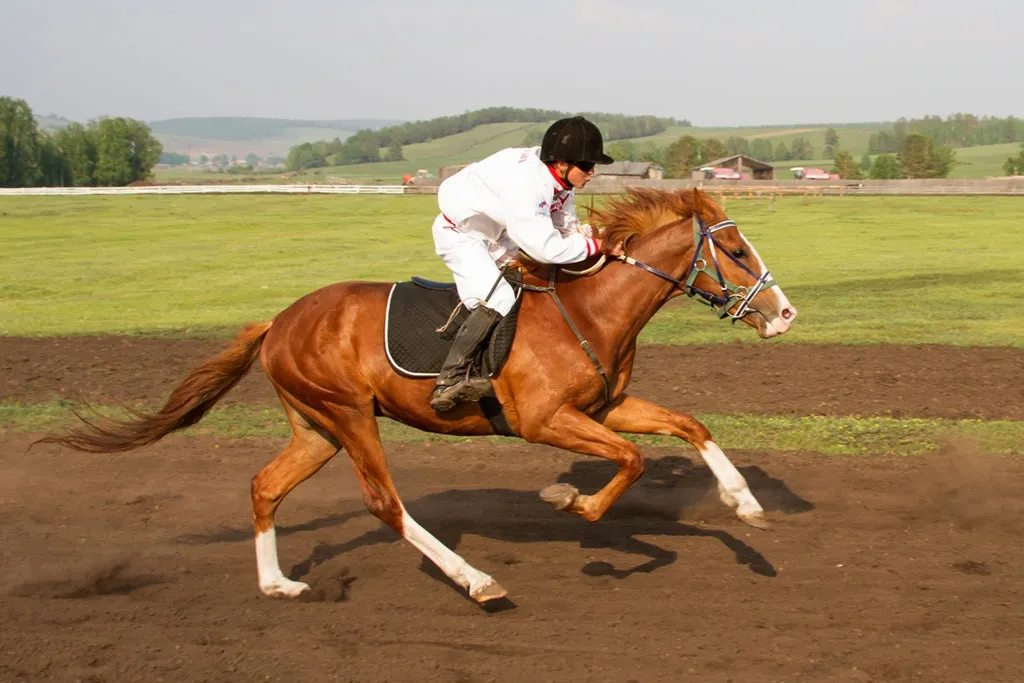
Male person horses have 40 to 42 permanent teeth, while females have just 36 to 40. Co-ordinate to the VCA Animal Hospital, the original purpose of these extra teeth was every bit fighting weaponry.

If y'all idea your true cat was sleepy, just wait until you hear well-nigh koalas. According to the Australian Koala Foundation, these cuties sleep betwixt 18 and 22 hours a day. The koalas' diets require a lot of energy to digest, which is why they've got to nap so much.
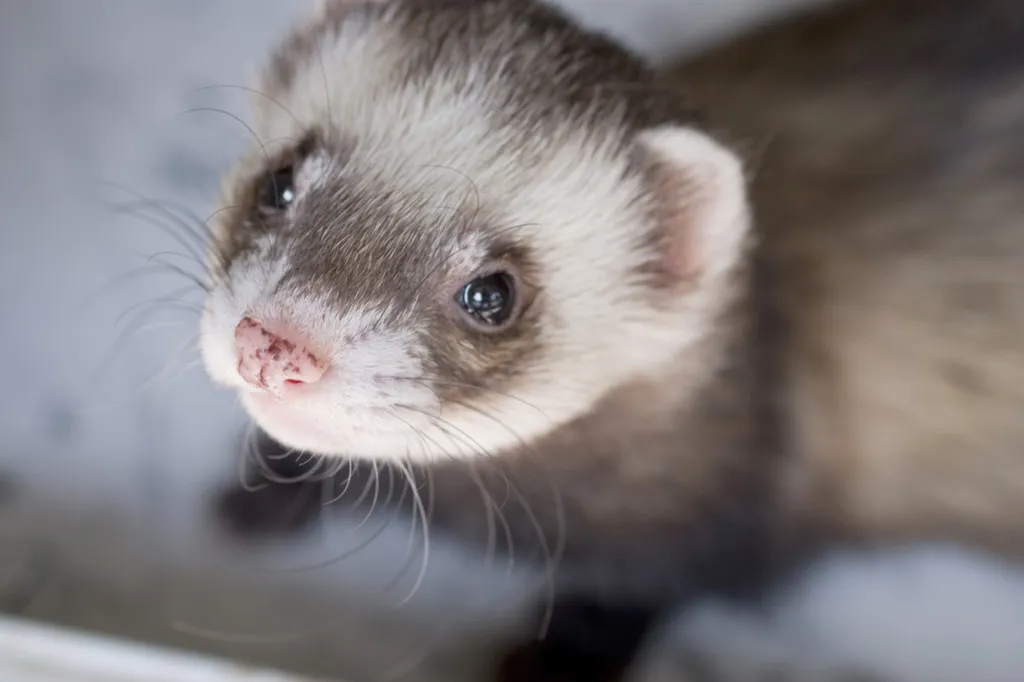
No, it's not because they're then professional—it's a modernized class of "busyness," the word originally used to describe a group of these weasel-related mammals.
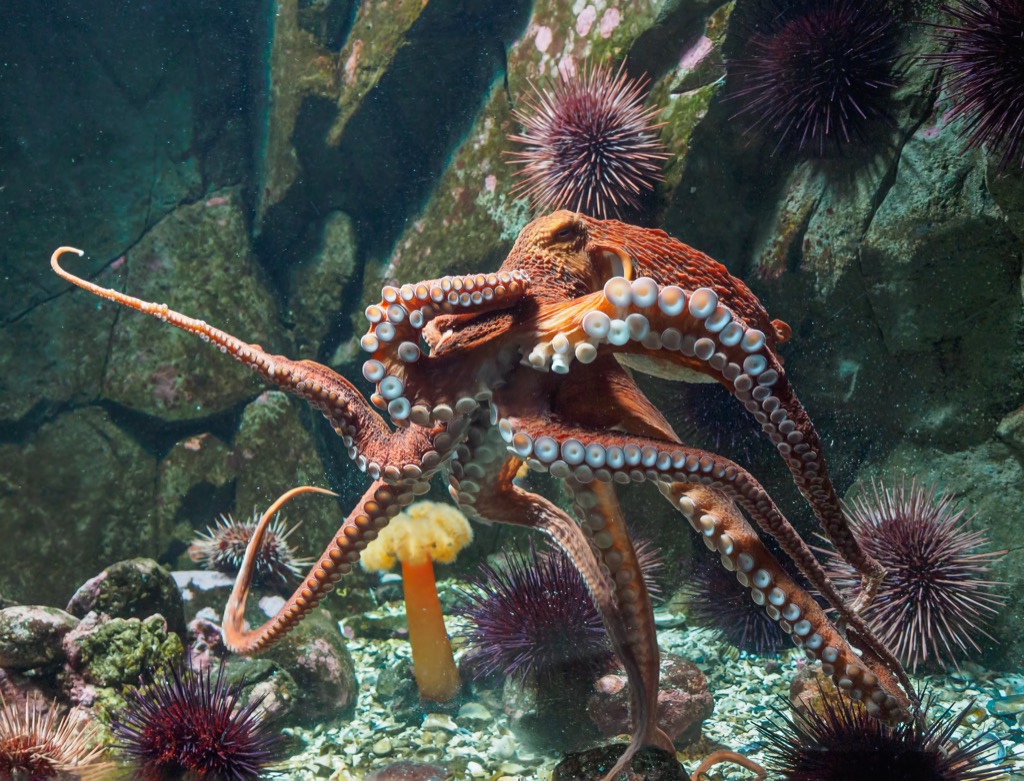
And yes, they are chosen arms, not tentacles. According to the Library of Congress, the animals can gustation and take hold of with the suckers on their arms. Even more impressive? Octopuses are capable of moving at speeds of upwardly to 25 miles per hour.

You lot already know that dolphins are smart. But did you know that they even have their own names? 1 2013 written report published in PNASfound that bottlenose dolphins develop specific whistles for i another.

Reindeers accept beautiful babe blues—simply only in the winter! Co-ordinate to the Biotechnology and Biological Sciences Research Council, "the optics of Arctic reindeer change colour through the seasons from gold to blue, adapting to extreme changes of calorie-free levels in their environment." The change in colour impacts how light is reflected through the animals' retina, and improves their vision.
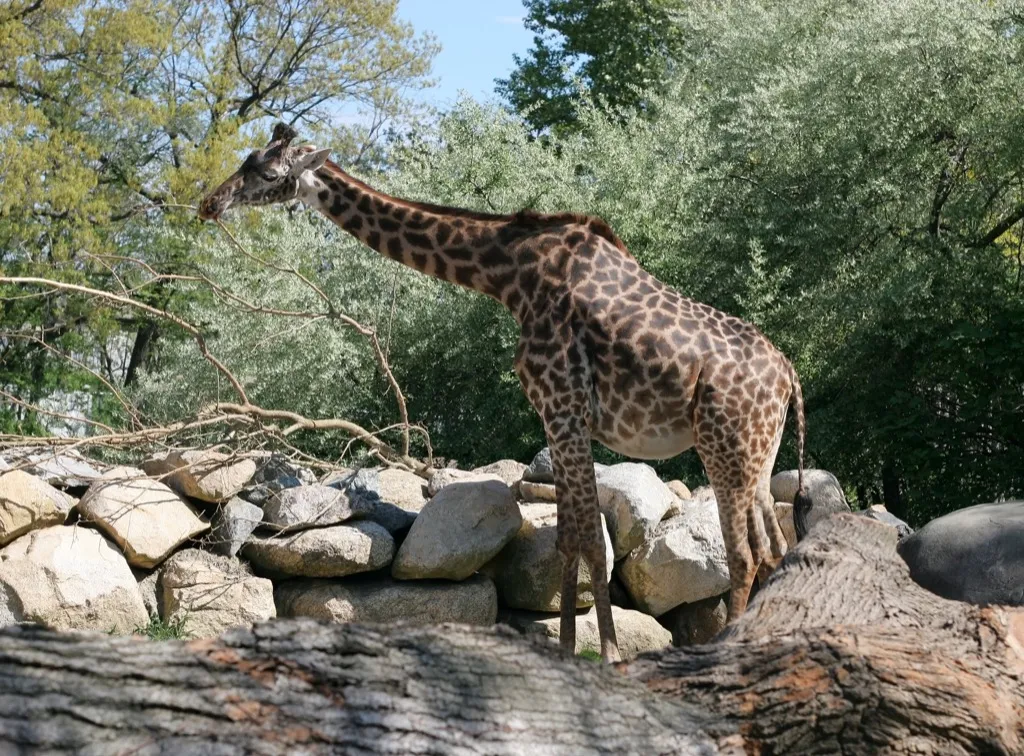
Scientists believe that it's and then they don't get sunburns while they eat. The animals' tongues are too around 20 inches long.
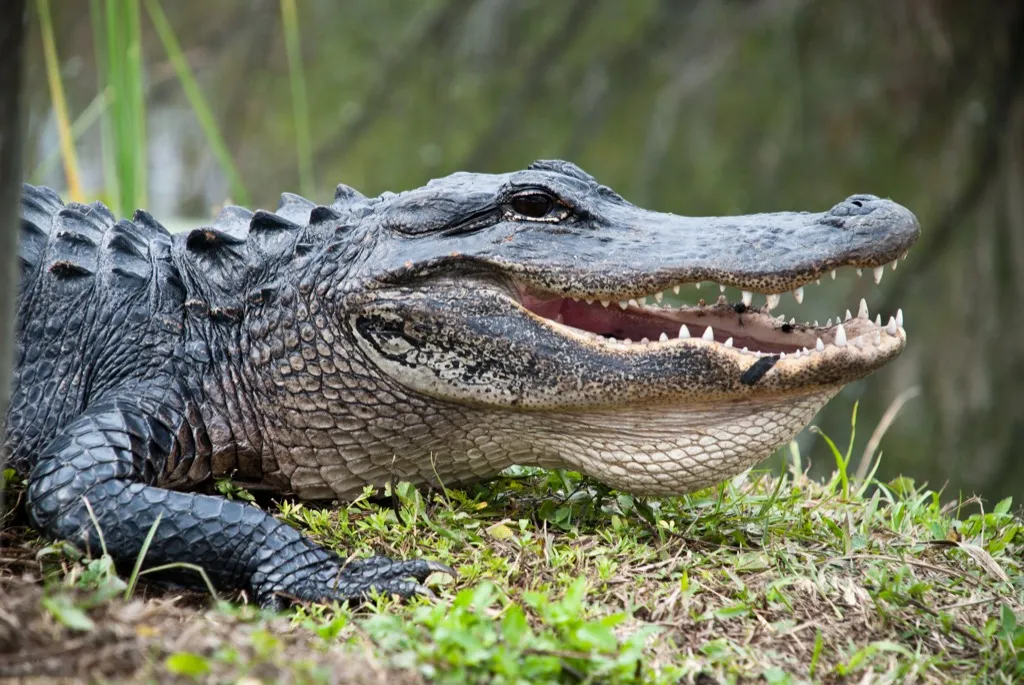
In decorated waters, manatees volition nudge alligators to get in front, and alligators mostly oblige.
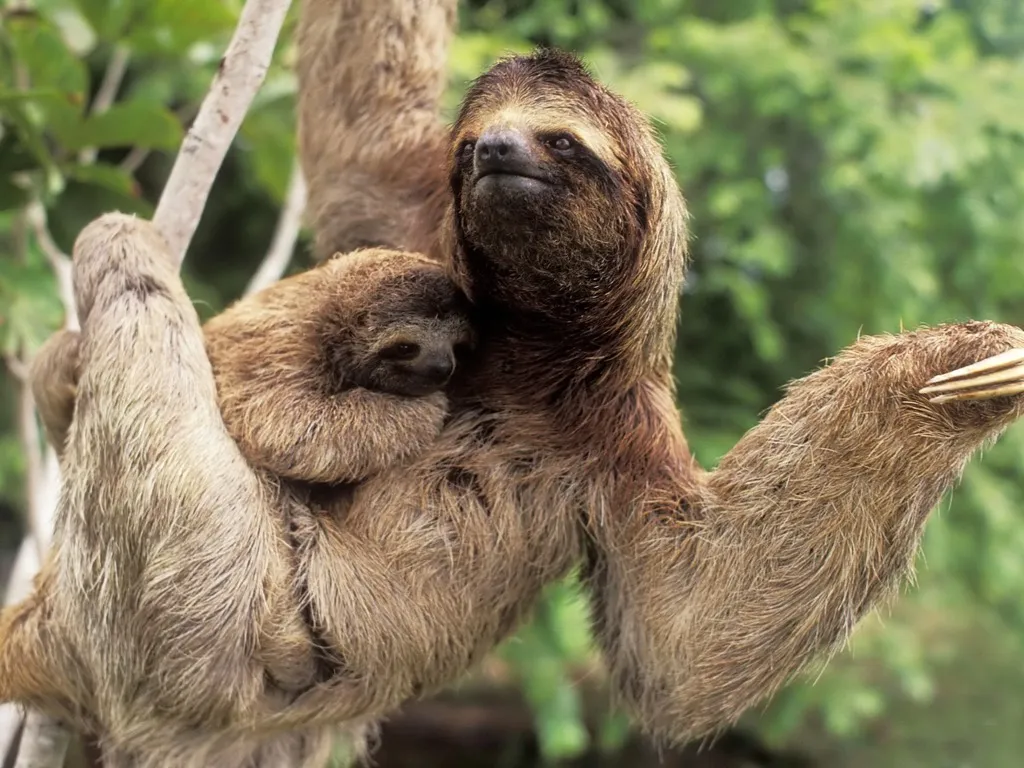
Everything nearly life is slow for these sleepy mammals. Most sloths will only have a bowel movement once a week, and it can take them upwardly to 30 days to completely digest a single leafage. For comparison, information technology takes the boilerplate man 12 to 48 hours to ingest, digest, and eliminate waste from food.
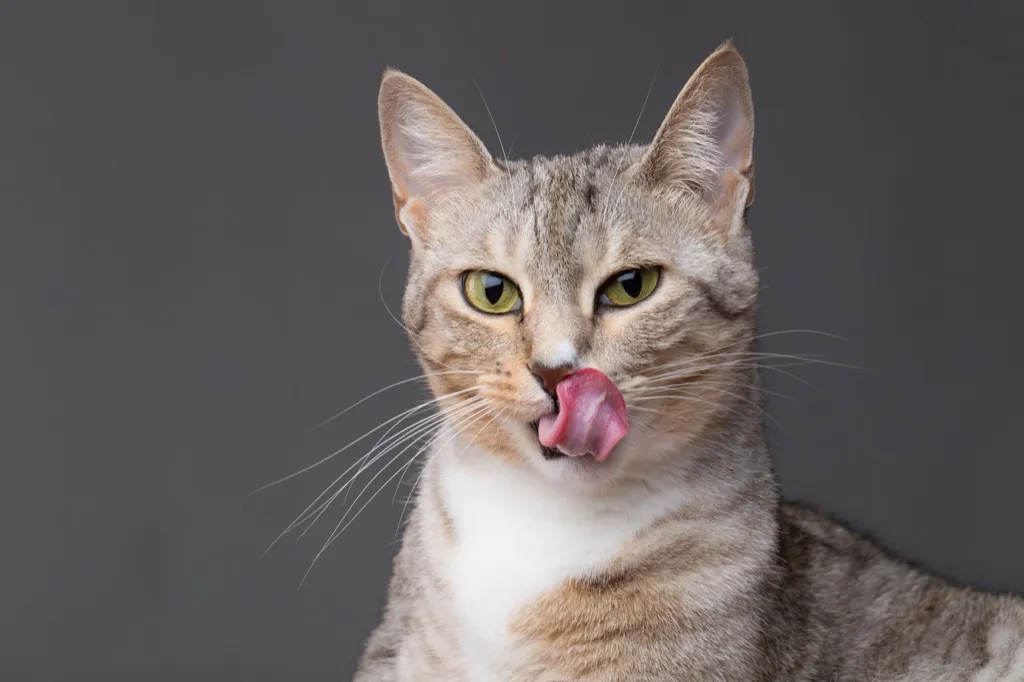
You lot probably know that cats honey to talk to their humans. But did you lot know you're unlikely to encounter your feline friend collaborate the aforementioned fashion with another cat? That's because other than kittens meowing at their mothers, cats don't meow at other cats.

Elephant calves will suck their trunks to comfort themselves. The babies do it for the same reason humans do (it mimics the action of suckling their mothers).
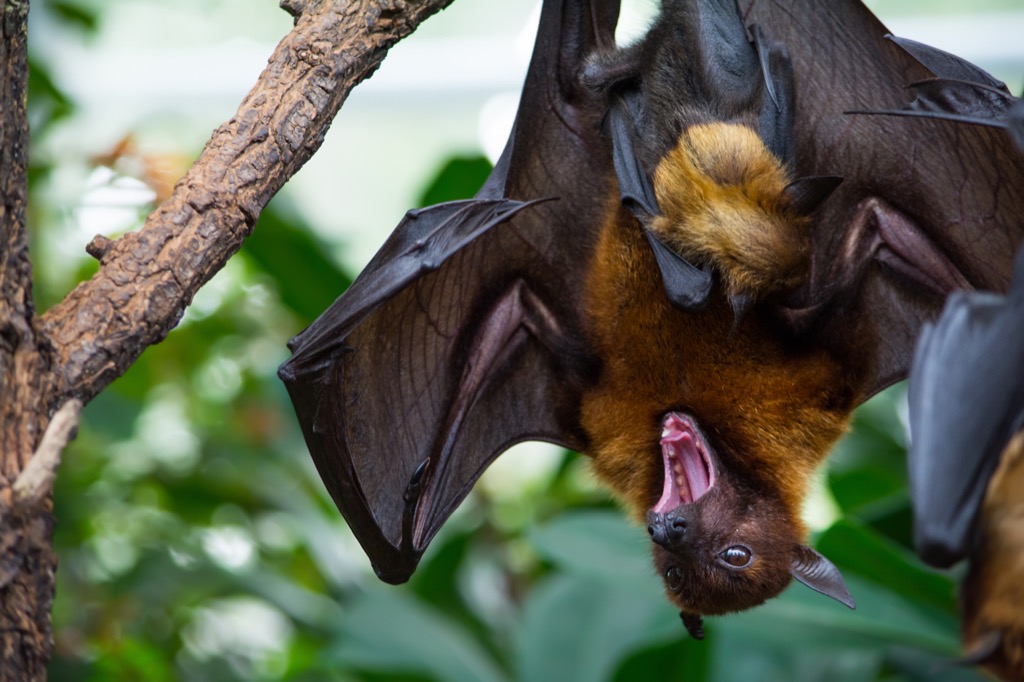
According to Bat Conservation International, bats requite nascency to babies—known as pups—that can weigh as much as one-third of the mother'south weight. If that doesn't audio like a lot, imagine a person giving birth to a babe that weighed 40 pounds.
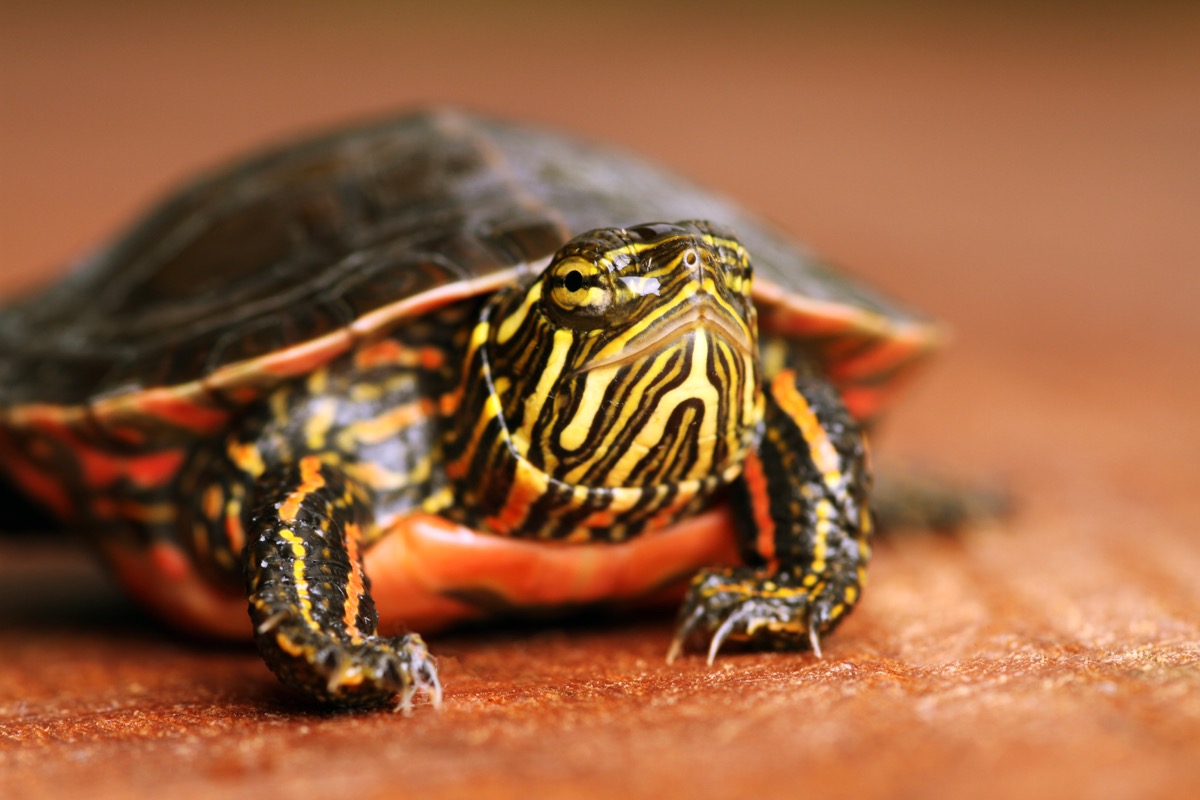
Not all creatures head to warmer climates when it gets cold out, and that means they need to learn to survive in chilly atmospheric condition. Painted turtles need to adapt to frozen ponds, which restrict their admission to the air in a higher place the water. They do that past breathing through their butts—specifically, the all-purpose orifice called the cloaca. Thanks to a process called cloacal respiration, the turtles are able to get oxygen directly from the water around them.

While you may think that Fido has the same dinnertime experience equally yous practise, he'due south actually got a much different gustatory modality bud arrangement. Humans have about nine,000 taste buds, while dogs have only around 1,700. And while they can place the aforementioned four gustatory modality sensations as people, dogs are not fond of common salt.
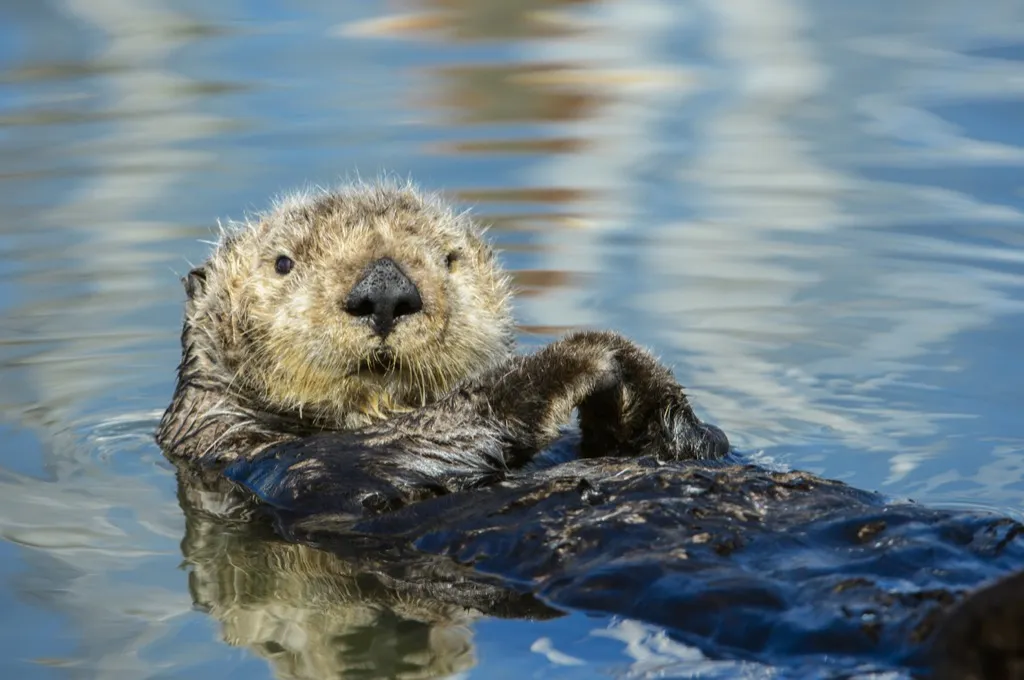
They're thought to have up to one million hairs per square inch. Their fur consists of two layers and is designed to trap a layer of air adjacent to their skin so their skin doesn't get wet.
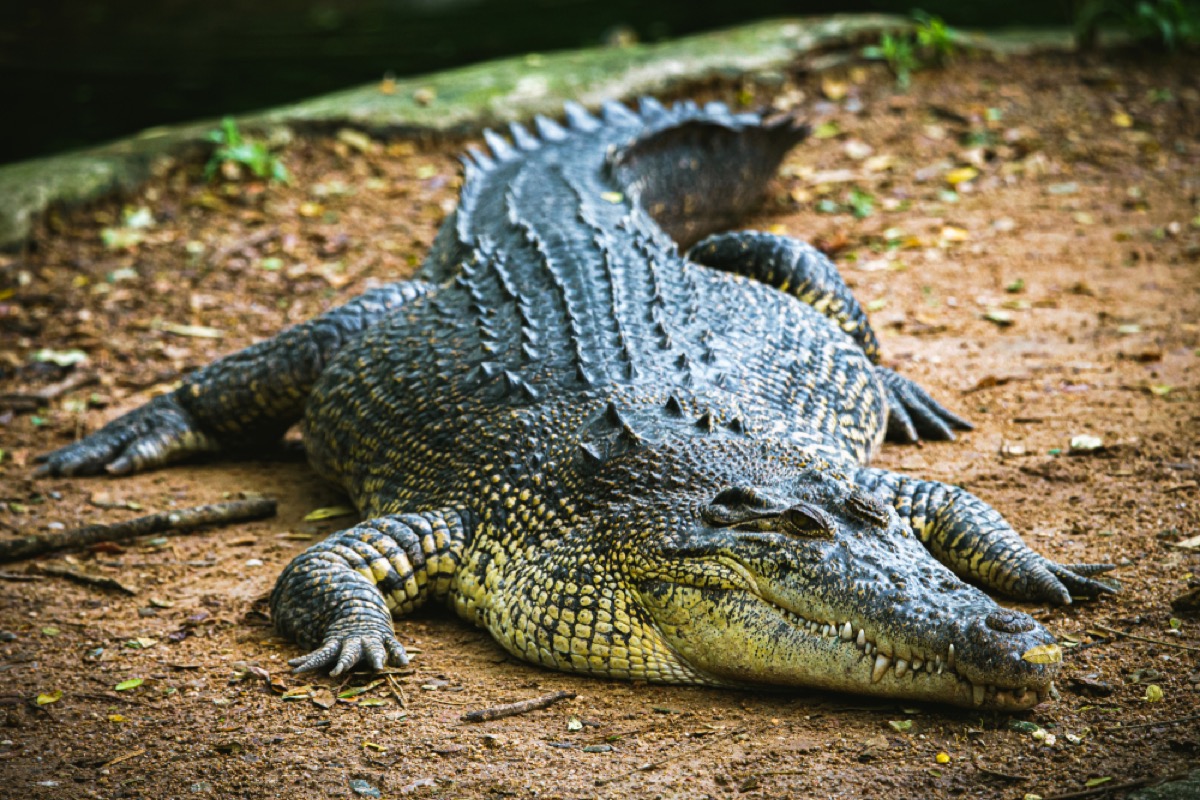
According to a 2018 study published in Copeia, alligators often haven't hit their full size until 33.

Their legislative powers, even so, are still up for debate.

Snow leopards have less-developed song cords than their boyfriend large cats, significant that they can't roar, but make a purr-like sound chosen a chuff instead. For a 2010 report published in the Biological Journal of the Linnean Society, scientists researched why some cats have a higher-pitched meow than others. They found that it'south not size that determines a kitty'southward call, but habitat.

The salamanders are the only vertebrates that can supercede their skin, limbs, tail, jaws, and spines at any age. On the flip side, humans tin regenerate lost limb buds as embryos and fingertips as young children.

Individual male person rhinos are referred to as bulls, and females as cows.
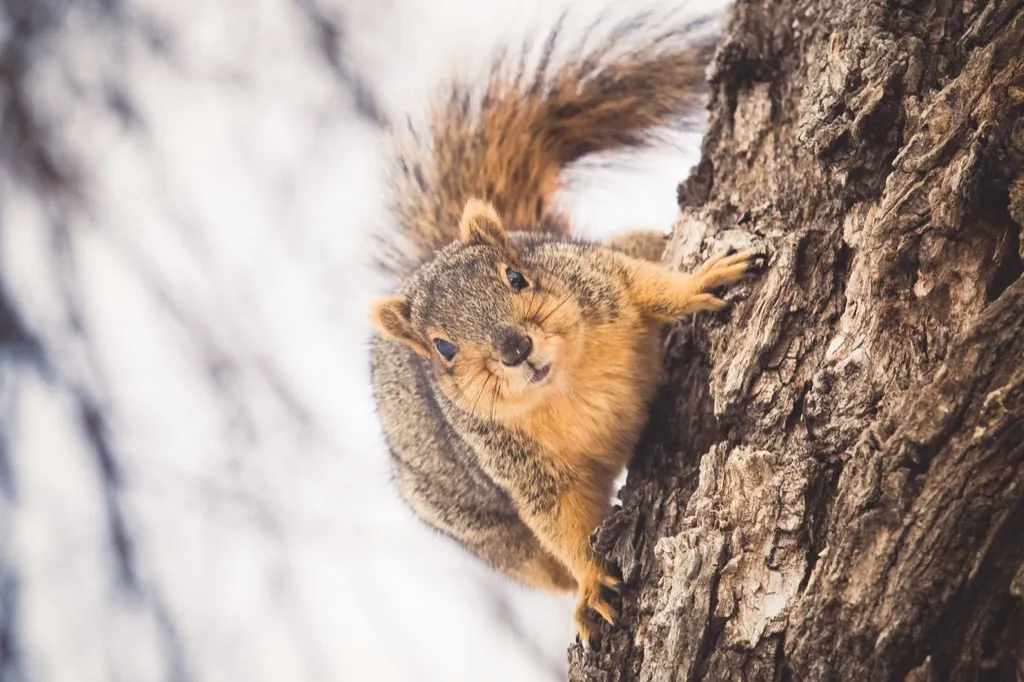
Turns out, squirrels accept an intense motherly instinct. One 2010 study by researchers at the Academy of Guelph constitute that the animals volition take in the orphaned pups of their late family members.
"Social animals, including lions and chimpanzees, are oft surrounded by relatives, then information technology's non surprising that a female would adopt an orphaned family member considering they take already spent a lot of time together," said lead researcher Andrew McAdam, an evolutionary biologist. "Just red squirrels live in complete isolation and are very territorial. The only time they will allow another squirrel on their territory is the one day a year when the females are ready to mate or when they are nursing their pups."

According to National Geographic, it's the longest tongue of whatsoever known mammal.

Cows have stronger social ties than you might retrieve. One 2013 study conducted past researchers at the Academy of Northampton found that when cows were separated from their BFFs, their heart rates increased as a sign of stress.
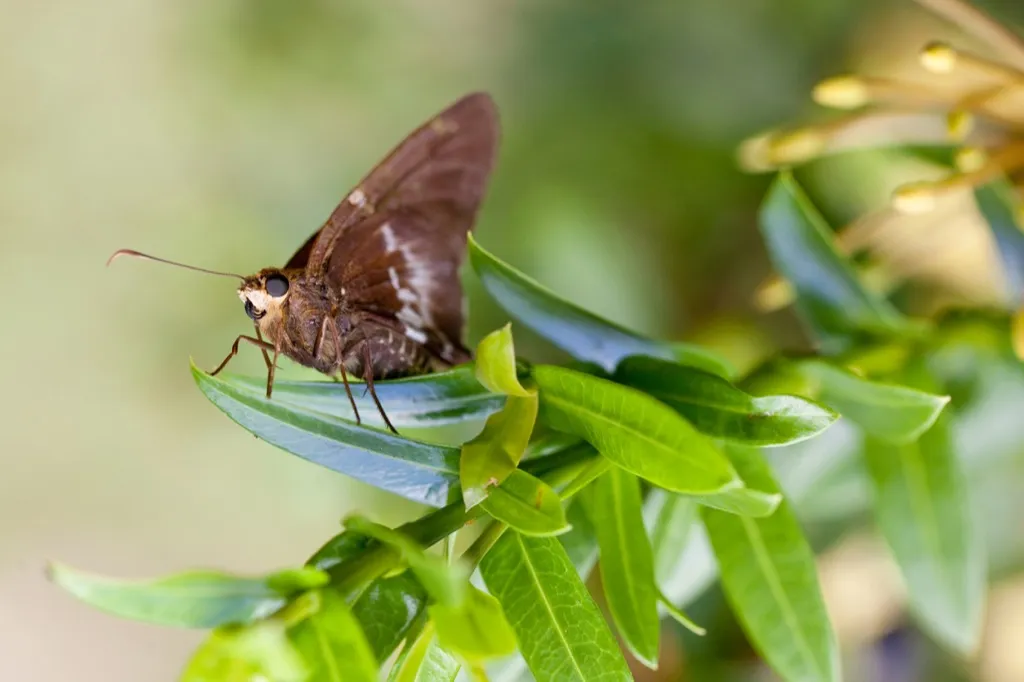
When a male moth catches a whiff of a female moth, he'll travel miles to detect her—based off her olfactory property alone. According to the experts at Audobon, "they don't know what the female person sounds like, or even what she looks like. But when they olfactory property her, boy, exercise they know it, and they use her seductive musk to track her down."
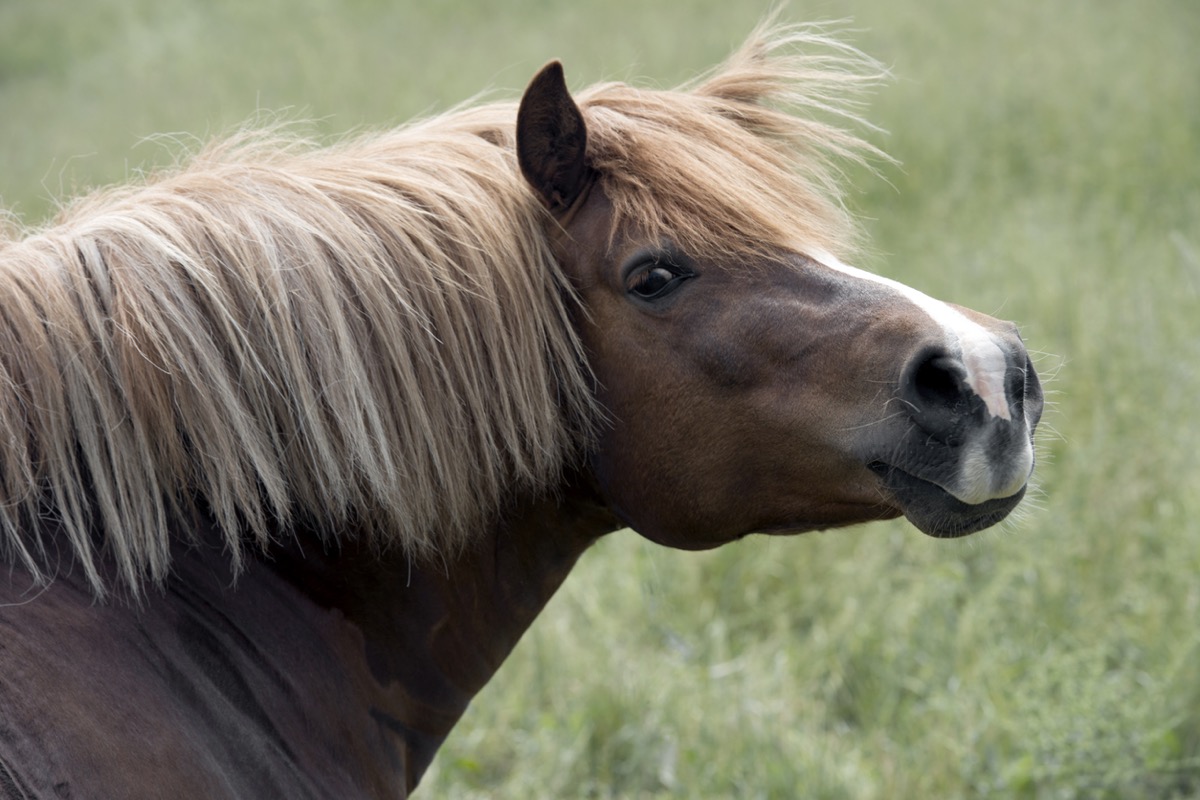
Horses tin make 17 facial movements, which is 3 more chimps and only 10 fewer than humans, according to a 2015 study published in PLOS One.
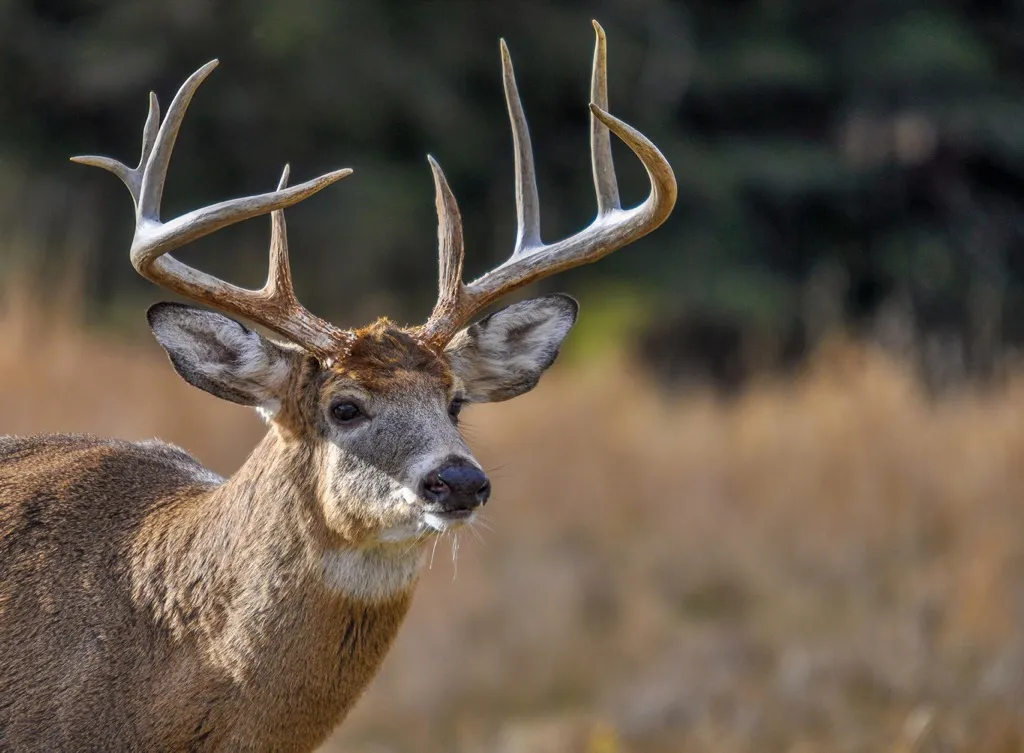
Yeah, white-tailed deer can hit top speeds of 35 miles per hour. Recall that'south fast? Reindeer can run up to50 miles per hour.
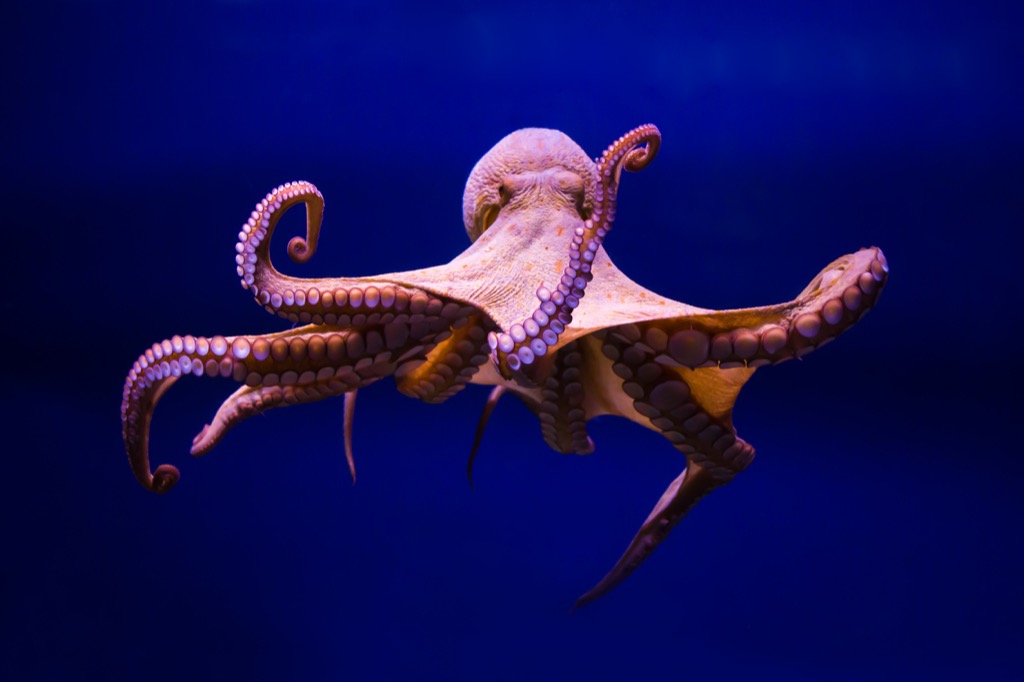
Octopuses accept two more hearts than you do. Two hearts are used to pump claret to their gills, while the third brings claret to the rest of their body. If that's not plenty, they also have nine brains.

Certain species of the Amynthas worm, which have recently been identified in the Midwestern United States, can spring and detach their tails when disturbed.

Nile crocodiles tin can live for a full century. And they can do a lot of damage over the course of those 100 years: Approximately 200 people die every year from Nile crocodile attacks.

Just how smart are ravens? A 2002 written report published in Animal Behaviour institute that these catchy birds take the power to deceive each other. The entire corvid family—which includes crows, ravens, and jays—is exceptionally intelligent. These birds have too been known to play pranks on one another, and to tease other animals.

While scientists don't exactly think they accept a sense of humour, rats will make a laugh-similar sound when tickled.

Yous might think it's just their fur, but no, tigers have striped skin. And speaking of those stripes, much like our fingerprints, they're unique to every tiger.
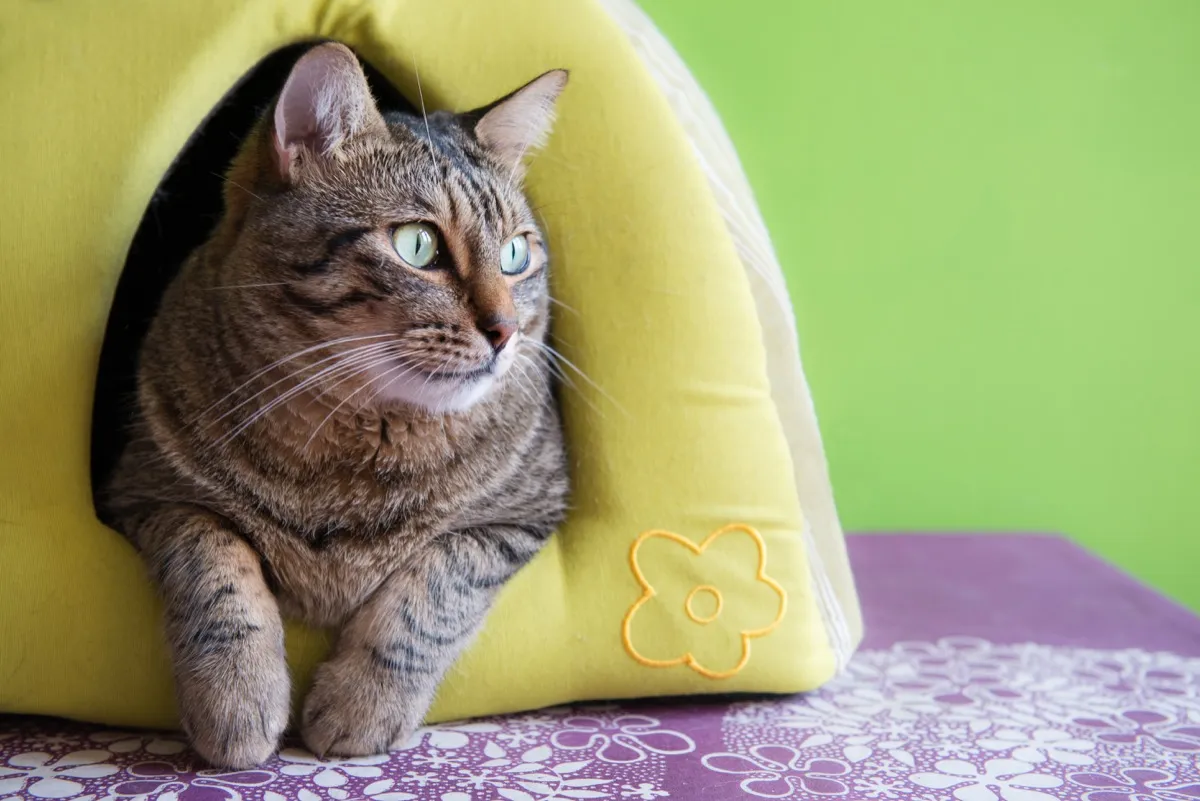
Sorry, cat owners, y'all're not only being paranoid: Your petdoesknow when yous're calling their name, and they're ignoring you lot anyway. In a 2019 study published inScientific Reports, researchers discovered that while cats can distinguish their own name, they don't necessarily feel obligated to respond.
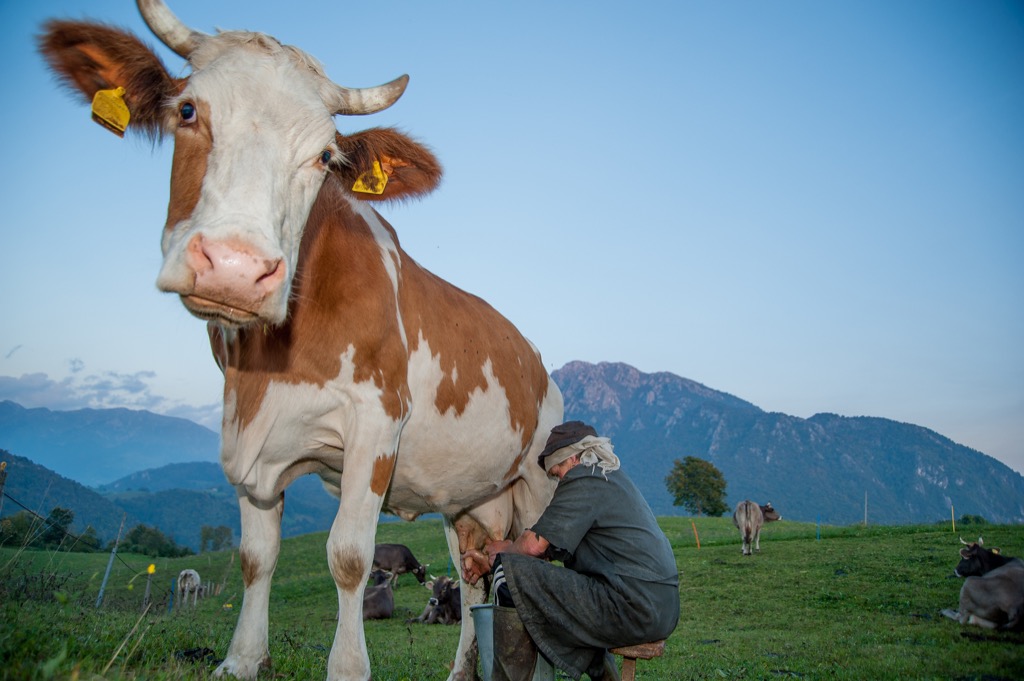
Phone call it a moo-d. Researchers at the Academy of Leicester School of Psychology constitute that cows produced 1.54 more pints per day—a iii percent increase—when they were played slow music, equally opposed to more upbeat tunes.
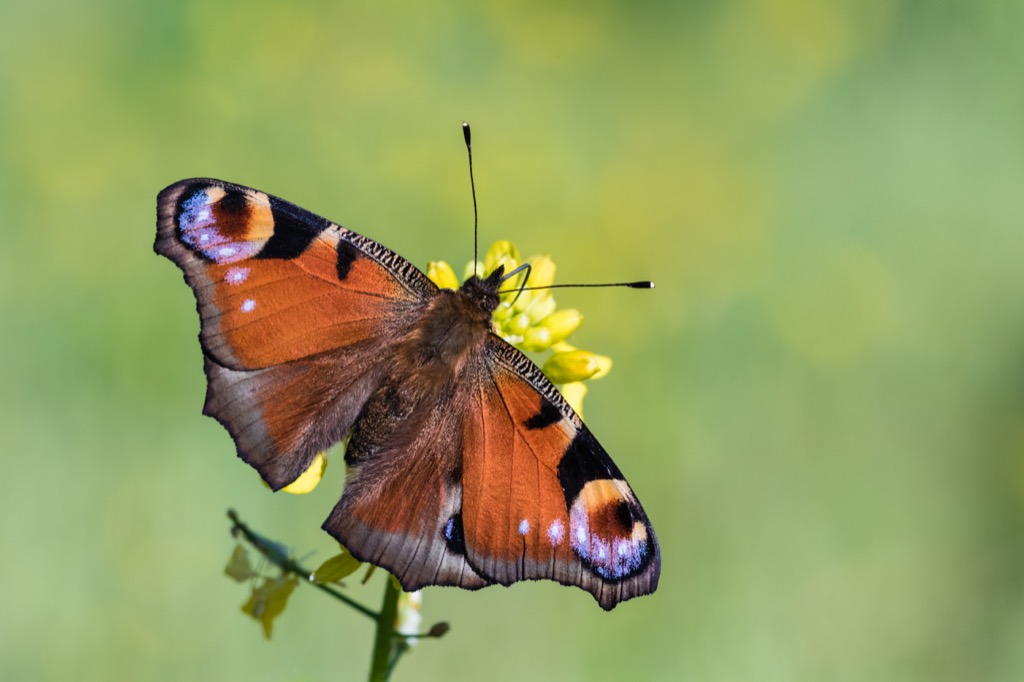
Non only do collywobbles taste using their feet—the receptors on their legs are also 200 times stronger than human taste buds. When a butterfly lands on a found, they utilize these sensors to determine whether or not what they're standing on is edible.
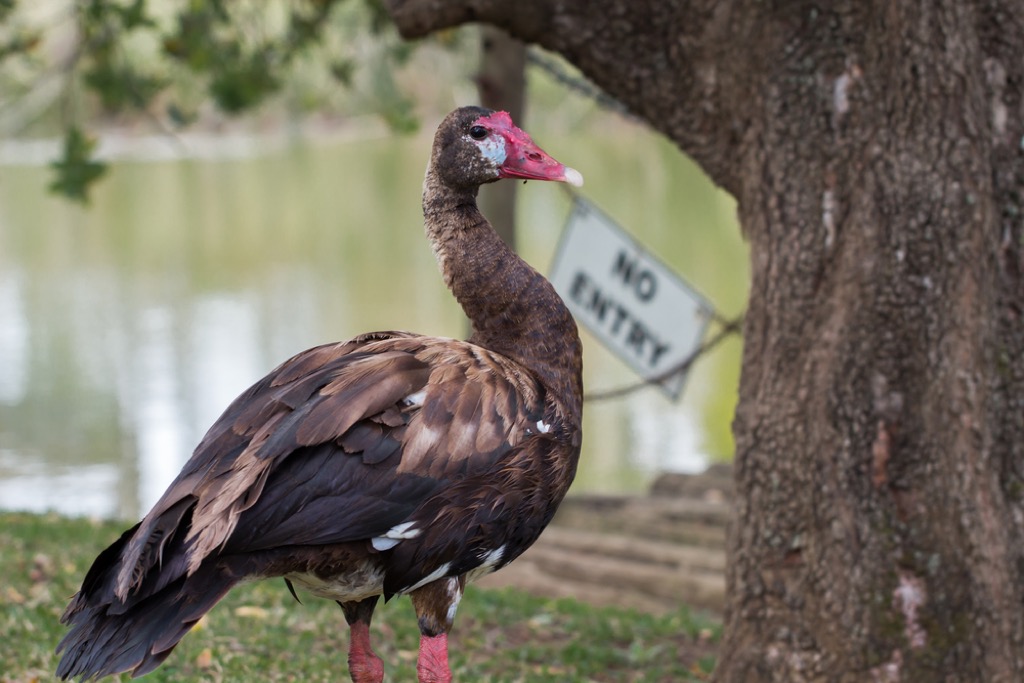
Don't program on eating a spur-winged goose if you happen to encounter one during your travels. These birds, natives of sub-Saharan Africa, have flesh that's often poisonous to humans, cheers to their nutrition of cicatrice beetles, which incorporate the deadly cantharidin poison.
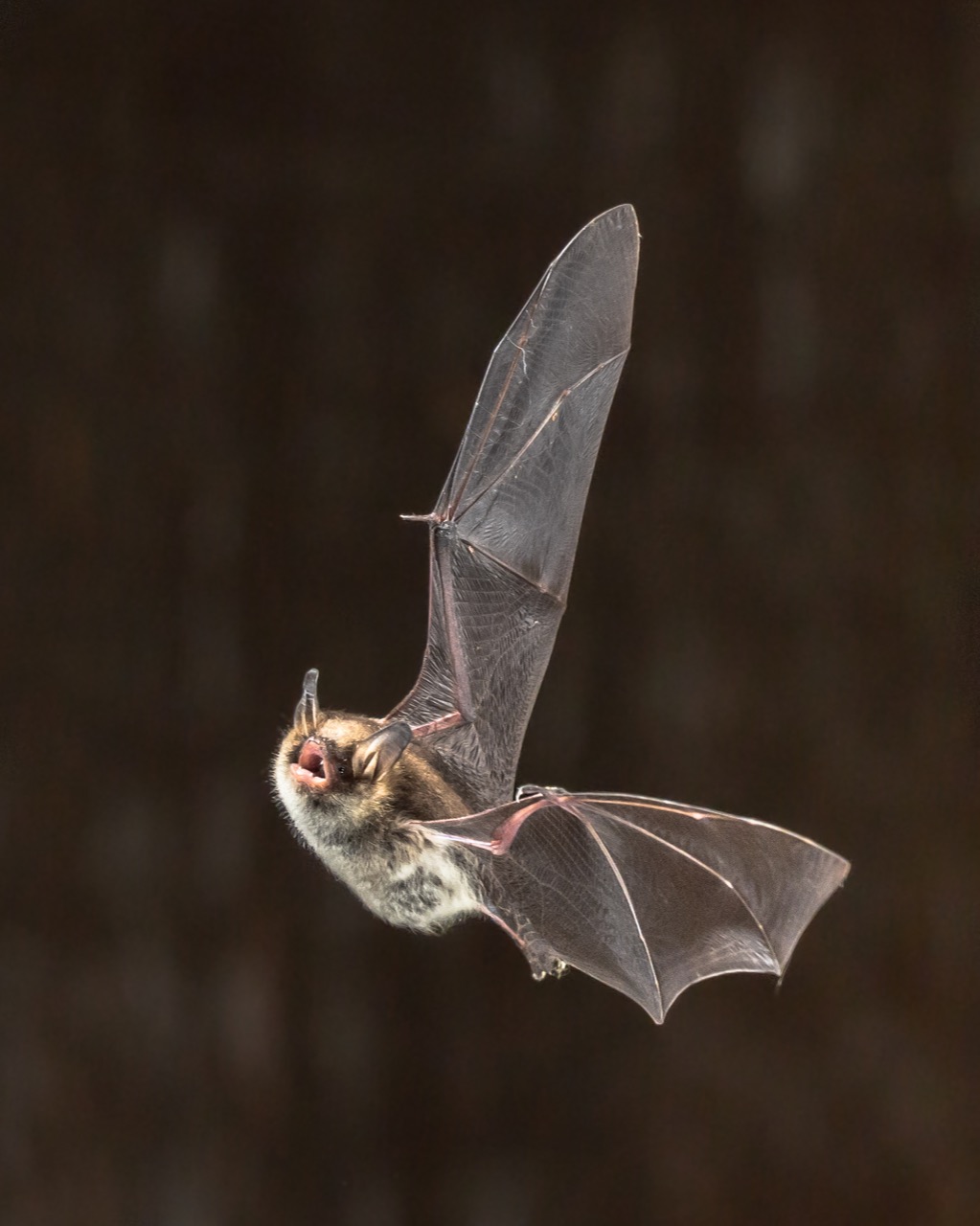
Vampire bats practise more than just seize with teeth their prey—they too keep the other creature'south claret from clotting. Their saliva works equally an anticoagulant, and so that the blood can menstruation freely as they feed. Here's another fun fact: The poly peptide in the anticoagulant has been nicknamed "Draculin." Chilling!
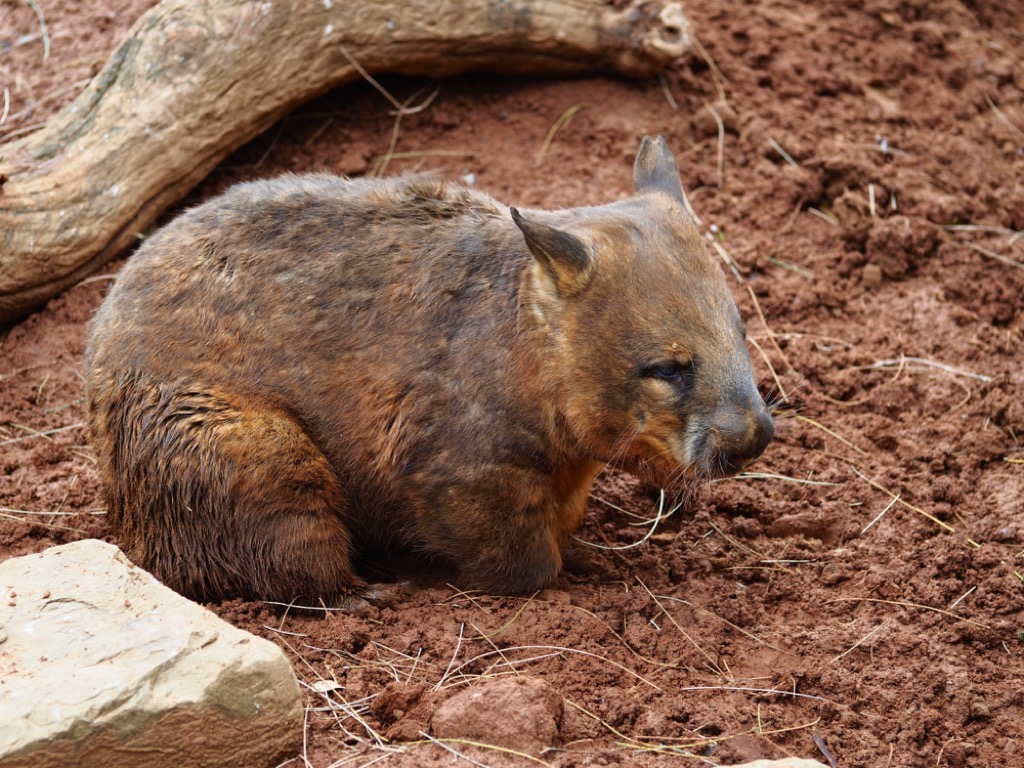
Wombats use their droppings to warn other animals to stay off their turf. Luckily, their cube-shaped poop makes it piece of cake to see that a spot is governed by wombats, every bit the piffling squares tend to stay put more easily than spherical debris would.
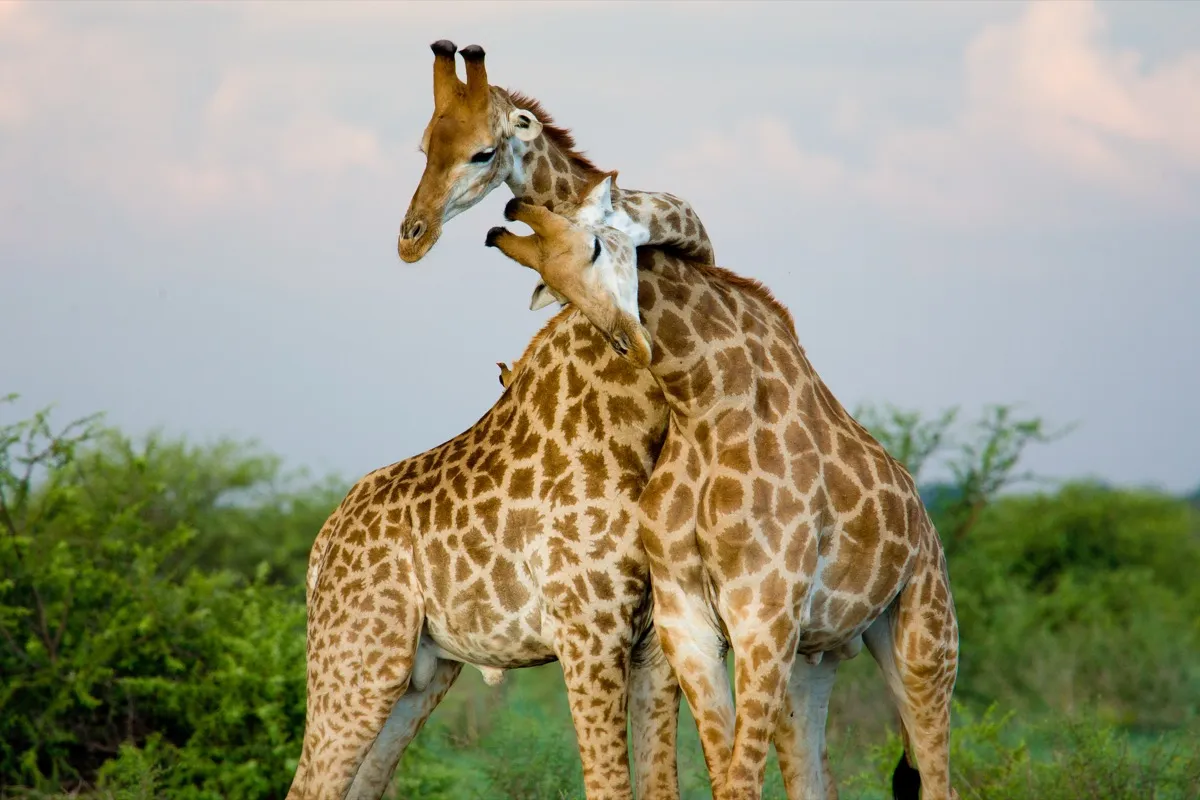
You lot tin can learn a lot from the color of a giraffe's spots. According to a 2019 study inBeast Behaviour, giraffes with darker spots are more dominant than giraffes with lighter spots. And not merely that: Dark-spotted giraffes too tend to be more than solitary.

Groups of killer whales take their ain dialects that are farther influenced by the company they keep. A 2014 written report published in The Periodical of the Acoustical Society of America revealed that orcas housed with bottlenose dolphins over a long period of time were able to replicate the dolphins' language.
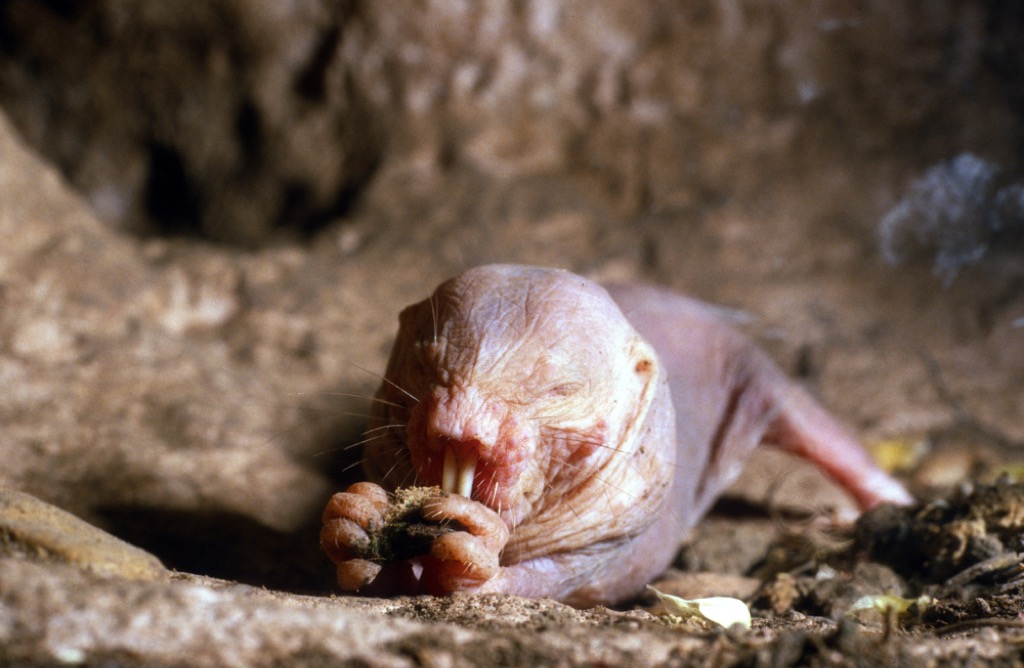
To ensure her dominance, the queen mole rat works to brand it impossible for other female mole rats to have litters. In fact, the queen can produce a substance in her urine that renders other female mole rats infertile.
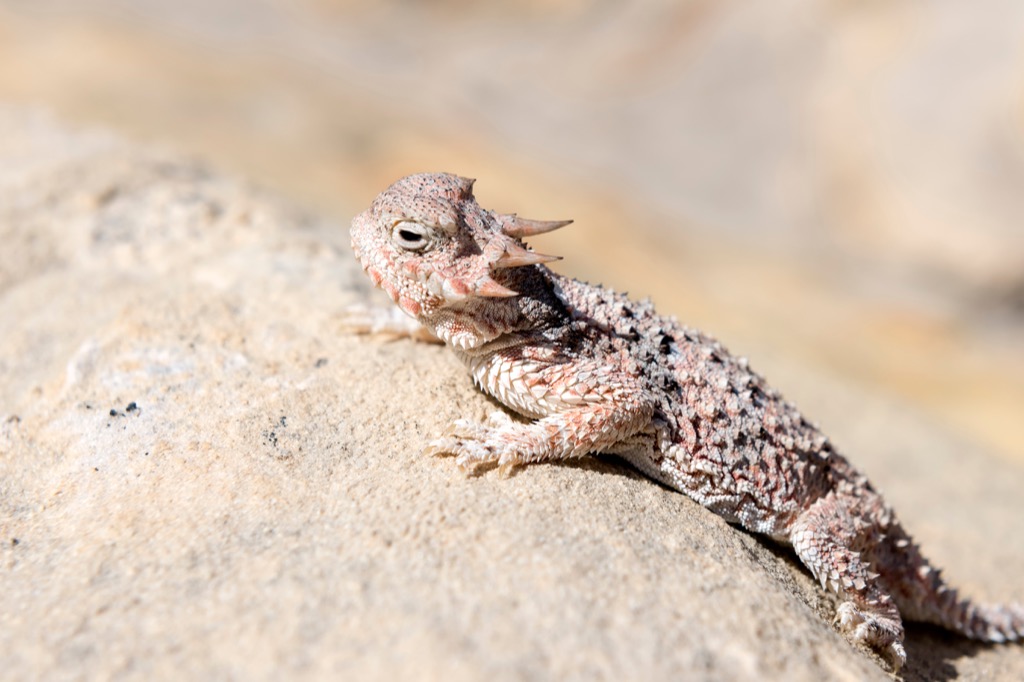
The horned lizard has a pretty impressive trick for evading predators. When a horned lizard finds itself in a perilous situation, information technology can squirt a stream of blood from its eyes. The predator and so runs off, considering, well, wouldn't you?

Relax, pigeons—information technology's notallcatfish. But yes, in southwestern French republic, a group of European catfish have learned to kill pigeons, launching themselves out of the water to grab the sunbathing birds.
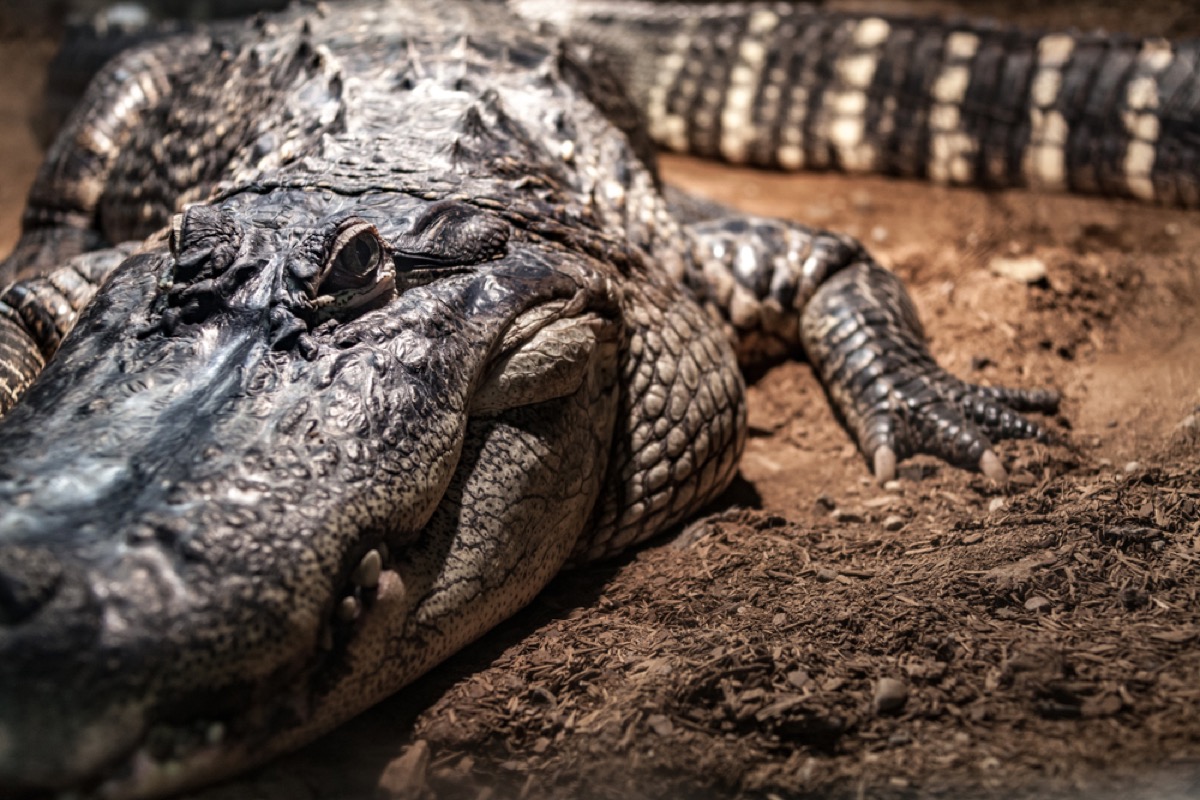
If yous think crocodiles aren't frightening enough, consider this: They used to gallop. While modern-solar day crocodiles can move surprisingly fast, giant crocodiles during the Cretaceous period could use their legs to chase and kill dinosaurs.
Boosted reporting by Desirée O.
Source: https://bestlifeonline.com/animal-facts/
Posted by: lomaxbuting.blogspot.com

0 Response to "What Are Some Cool Facts About Animals"
Post a Comment